- Mitarbeiterführung
- Kommunikation
- Unternehmensführung
- Persönliche Weiterentwicklung
- Rekrutierung
- Gesundheit und Resilienz
- Gratis Tools
- Audio-Guides

Candidate Journey: Reise des Bewerbers in 6 Phasen (+Vorlage)
„Die Stelle ist nun bereits seit Wochen ausgeschrieben und es fehlen weiterhin die passenden Bewerbungen – was machen wir falsch?“
Vielleicht fehlt eine gut durchdachte und begeisternde Candidate Journey (Reise des Bewerbers).
Normalerweise gucken Unternehmen aus ihrer eigenen Perspektive auf den Rekrutierungsprozess.
Doch wie sieht es aus der Bewerberperspektive aus?
Studien zeugen von einem Paradigmenwechsel zwischen Unternehmen und Bewerbern.
Bewerber haben zunehmend mehr Macht, sich den Arbeitgeber auszusuchen.
Wie also überzeugt man als Unternehmen die richtigen Bewerber?
Nach meinem Studium mit den Schwerpunkten Personal und Marketing habe ich mich intensiv den Themen Candidate Journey und Candidate Experience auseinandergesetzt.
Dabei wurde mir klar, dass diesen Themen zu wenig Aufmerksamkeit geschenkt wird.
Mit den Tipps aus diesem Beitrag kannst du deine eigene begeisternde Candidate Journey erstellen.
Direkt zu meinen Impulsen für Ihre Umsetzung springen? Einfach hier klicken .
Typische Herausforderungen bei der Rekrutierung
Bei Google sind letztes Jahr auf 5000 ausgeschriebenen Stellen rund 2.000.000 (!) Bewerbungen eingegangen. Davon können die meisten Firmen nur träumen.
Die Realität ist, dass viele Betriebe immer größere Herausforderungen haben, offene Stellen zu besetzen.
Bedingt ist das unter anderem durch den demographischen Wandel, den verschärften War of Talents und der Digitalisierung.
Deshalb versuchen manche Unternehmen zwanghaft, durch Employer-Branding und Personalmarketingmaßnahmen ihre Arbeitgeberattraktivität zu erhöhen.
Doch damit diese Maßnahmen erfolgreich sind, müssen sie nah an den Bedürfnissen und Werten der Bewerber ausgerichtet sein.
Außerdem ist es wichtig, die bereits gelebte Unternehmenskultur samt der Werte bei der Kommunikation nicht zu vernachlässigen.
Das alles bekommt man unter einen Hut, indem man eine Candidate Journey Map erstellt.
Candidate Experience: Jeder Bewerber ist ein Kunde
Hast du schon mal überlegt deinen Rekrutierungsprozess als eine Art Verkaufsprozess für ein bestimmtes Produkt anzusehen: Den Job?
Mit dieser Denke werden Bewerber grundsätzlich und konsequent als Kunden angesehen und angesprochen.
Das ist die Candidate Experience – die (positive, begeisternde) Erfahrung, die ein Bewerber in deinem Unternehmen macht.
Und die Customer Journey, die dir vielleicht aus Marketing oder Vertrieb ein Begriff ist, wird durch die Reise des Bewerbers, der Candidate Journey ersetzt.
Sie setzt sich aus der Summe an unzähligen Touchpoints zusammen, die eure Bewerber während des Bewerbungsprozesses durchläuft.
Die Candidate Journey beginnt mit dem ersten Kontakt (z.B. die Stellenausschreibung) und endet erst nachdem das Onboardings abgeschlossen ist.
Für die grafische Darstellung dieser Reise erstellt man eine Candidate Journey Map.
Mit der Methode des Candidate Journey Mappings können die einzelnen Touchpoints während der Candidate Journey auf einer Karte anschaulich skizziert und nach Relevanz gewichtet werden.
Cadidate Journey Mapping (ein Beispiel)
Wenn du die Candidate Journey bei euch im Unternehmen skizzieren möchtest, nutze unsere Vorlage. Hier kannst du das PDF downloaden .
Das “Bewerbererleben” bzw. die Candidate Experience an jedem einzelnen Touchpoint (wir nennen diese auch “Momente der Wahrheit”) ist von hoher Bedeutung, ob sich der Bewerber für oder gegen dich entscheidet.
Deshalb müssen alle Touchpoints begeisternder denn je gestaltet werden. Und Emotionen spielen hier eine wichtige Rolle.
Wie gehst du dabei vor?
Als erstes brauchen deine Mitarbeiter ein Bewusstsein für die Thematik. Jeder von uns war auch selbst mal Bewerber und die meisten können sich deshalb gut einfühlen.
Dann solltet ihr eure Touchpoints gemeinsam analysieren, skizzieren und gezielt verbessern.
Dazu gleich mehr.
Eine Studie zum Thema Candidate Experience von metaHR hat untersucht, durch welche Faktoren sich positive sowie negative Erfahrungen entlang der Candidate Journey auszeichnen:
Faktoren für eine positive Candidate Experience
- Ein persönliche Ansprechpartner.
- Klarheit bei Auflistung von Job-Anforderungen und Transparenz im Bewerbungsprozess.
- Effizienter, intuitiver und mobiloptimierter Bewerbungsprozess von einer Dauer unter sechs Wochen.
- Die Möglichkeit, Feedback zu geben.
Faktoren für eine negative Candidate Experience
- Keine Auffindbarkeit im Internet.
- Fehlende Wertschätzung und wenig Interesse am Bewerber.
- Komplizierter Bewerbungsprozess.
- Unpersönliche, mit Standard-Texten gefüllte Absagen.
Meine eigene positive Candidate Experience
Auf der Suche nach einem Auslandspraktikum bin ich bei einem großen deutschen Luftverkehrskonzern fündig geworden.
Meine positive Erfahrung mit dem Bewerbungsprozess:
- Die ausgeschriebene Stelle war auf dem unternehmenseigenen Karriereportal nach Auswahl einzelner Filter schnell auffindbar.
- Das Anlegen des Bewerberaccounts überzeugte durch Geschwindigkeit und Übersichtlichkeit, unter anderem mit der Möglichkeit sich mit dem LinkedIn oder Xing Profil anmelden zu können.
- Nach Ausfüllen des Bewerbungsformulars konnten zusätzlich noch Anhänge mit Bewerbungsunterlangen hochgeladen werden.
Das Resultat: In nur 15 Minuten habe ich die Bewerbung abgeschickt.
Sofort erhielt ich eine Eingangsbestätigung.
Darin enthalten die Bitte, innerhalb von sieben Tagen drei Online-Tests abzulegen, in denen Fähigkeiten zu sprachliches Denken, analytisches Denken und Englisch abgetestet werden.
Die Tests haben circa 25 Minuten in Anspruch genommen. Daraufhin konnte hatte ich mein Testergebnis mit dem durchschnittlichen Ergebnis anderer Bewerber vergleichen.
Dieser Teil der Candidate Journey hat mich aufgrund der Schnelligkeit, Nutzerfreundlichkeit und Transparenz begeistert.
Positive Emotionen im Bewerbungsprozess
Dann hatte ich noch zwei digitale Vorstellungsgespräche via Zoom.
Die Gespräche waren geprägt von einer außerordentlichen Wertschätzung mir gegenüber, einer hohen Transparenz und einer zeitnahen Korrespondenz über Mail und Telefon.
Es wirkte trotz vieler digitaler Kontaktpunkte alles sehr menschlich, persönlich und emotional, was ein sehr positives Gefühl in mir hervorgerufen hat.
Alles in allem war meine Candidate Experience von Bewerbung bis Jobangebot durchweg positiv.
Leider ist das nicht die Regel, sondern eher die Ausnahme.
In vielen Unternehmen führen schlecht durchdachte Candidate Journeys zu Frust, Imageschäden und abspringenden Bewerbern.
Deshalb hier noch meine praktischen Tipps für die Erstellung einer Candidate Journey (Map):
So kannst du die Candidate Experience verbessern
- Die verschiedenen Touchpoints identifizieren , nach Relevanz gewichten und eine Candidate Journey Map erstellen. Nutze gerne unsere kostenlose Vorlage für die Skizzierung deiner Candidate Journey. Hier kannst du die Vorlage downloaden.
- Mitarbeiter zu einem Perspektivwechsel motivieren. Bitte deine Mitarbeiter, den eigenen Bewerbungsprozess intensiv zu reflektieren. Anschließend empfiehlt sich eine kritische Auseinandersetzung während eines Teammeetings zur Besprechung des weiteren Ablaufs.
- Stärke die Selbst- und Fremdwahrnehmung bei allen Beteiligten . Versuche konkret, deinen Mitarbeitenden ihr Verhalten in Rahmen von Persönlichkeitstrainings zu spiegeln. Dies kann durch dich persönlich erfolgen, oder noch besser: Feedback einholen durch externe Menschen, wie Bewerber, Kunden oder neutrale Berater und Coaches.
- Trainiere Touchpoints innerhalb der Candidate Journey, ähnlich zu Verkaufsprozessen, regelmäßig. (bspw. Korrespondenz mit Bewerbern, Vorstellungsgespräch etc.)
Und was passiert nach der Rekrutierung? Tipps für ein erfolgreiches Onboarding neuer Mitarbeiter findest du hier: Erfolgreiche Einarbeitung neuer Mitarbeiter in 3 Phasen
Und in fünf Schritten erstellt ihr eure eigene Candidate Journey:
Fünf Schritte zur Entwicklung einer Candidate Journey
- Sensibilisieren . Verankere ein einheitliches Bewusstsein einer begeisternden Candidate Experience in der Unternehmenskultur.
- Ausarbeitung und Selbstreflexion der unternehmenseigenen Candidate Journey . Berücksichtige hier sämtliche Touchpoints (Momente der Wahrheit) in den einzelnen Phasen der Candidate Journey.
- Offener Dialog mit aktiven und potenziellen Bewerbern . Verbesserungsvorschläge, Ideen, Wünsche notieren und Erwartungshaltungen abgleichen.
- Zusammenfassung und Ableitung von operativen Maßnahmen . Erkenntnisse aus der Selbstreflexion und dem Austausch der Bewerber zusammenfassen und operative Maßnahmen ableiten.
- Regelmäßige Kontrolle und Reflexion Überprüfe die gesamte Candidate Journey im Hinblick auf die Ausprägung der Candidate Experience und dem ’Fit’ zur Arbeitgerbermarke.
Du wirst sicherlich merken, wie wichtig ein Perspektivwechsel ist, um eine Candidate Journey nachhaltig begeisternder zu gestalten und die Bedürfnisse deiner Bewerber zu befriedigen.
Bring die Thematik in dein Team, sei Umsetzungsriese und erarbeite gemeinsam eine begeisternde Candidate Journey.
Sollte ich dein Interesse geweckt haben, freue ich mich auf deinen Kontakt. Gerne teile ich mit dir meine Erfahrungen und ausführliche Ergebnisse aktueller Studien zu dem Thema. Hier kannst du direkt Kontakt mit mir aufnehmen.
Weitere Impulse als Hörgenuss Unser Podcast
Mehr Mut bei der Mitarbeitersuche
Jetzt hier reinhören Auch auf Spotify und iTunes
Die in diesem Beitrag gewählte männliche Form bezieht sich immer zugleich auf weibliche, männliche und diverse Personen. Auf eine Mehrfachbezeichnung wird in der Regel zugunsten einer besseren Lesbarkeit verzichtet.
Deine Meinung ist uns wichtig! Wie fandest du diesen Beitrag?
Klicke auf die Sterne um dein Feedback abzugeben.
/ 5. Anzahl Bewertungen:
Danke für dein ehrliches Feedback.
Lasse uns diesen Beitrag verbessern!
Warum hast du dich für diese Bewertung entschieden?
Diskutiere jetzt mit Cancel Reply
Bitte speichert für den nächsten Kommentar meine Nutzerdaten in diesem Browser.
Lies’ hier weiter
Unser 5* führungs-podcast.
From sourcing applicants to collecting feedback, all your recruiting needs in one place.
Integrations
5000+ integrations for maximum productivity.
Keep track of all your client and candidate journeys.
Workflow Automation
A no-code integrations and automation platform within Recruit CRM.
- Recruit CRM exclusives
- Experts corner
- Case studies
- Testimonials
- Recruitment conferences
- Help center
Recruiter’s tool box
- 40+ FREE recruiting email templates to win over candidates
- How can recruiters create custom GPTs? [+ useful plugins & extensions]
- 8 free candidate experience survey templates that’ll give you solid insights
Hot on the block
- Français ( French )
- Português ( Portuguese )
- Español ( Spanish )
- Deutsch ( Deutsche )
Forecasting the future of recruiting operations with Jeremy Lyons
Table of contents, what is the candidate journey here are its top 11 touchpoints and ways to map them.
From the moment a job seeker comes across a job post to the day of their successful placement, they go through a prolonged journey with recruiters.
This ‘journey’ consists of a series of interactions that can make or break your recruitment process.
In this article, we’re diving into its various touchpoints and top strategies to map them so you can create an experience for candidates to remember. Read on.
What is the candidate journey?

The candidate journey refers to the entire experience a job seeker goes through, from discovering a job opportunity to potentially accepting an offer in line with your hiring drive.
It includes all the candidate-recruiter interactions, be it the application process, the interviews , the means of communication, or the onboarding procedure .
The importance of this journey lies in the impact on how a candidate perceives the recruitment process, the employer brand of the company, and the quality of candidates who are willing to sign up for the open position.
What are the touchpoints of the candidate journey?
The pre-application phase, stage 1: awareness.
In this stage, the candidate becomes aware of the job opportunity. This can occur through various channels, such as job boards, social media, referrals, or company websites.
Remember, a company’s employer brand is critical in creating awareness and attracting potential candidates.
Stage 2: Interest
Now, the applicant tends to develop an interest in learning more about the position and the company. This also includes whether a job-seeker finds your job opening relevant to their work profile.
Further, they may dig into the business, study the respective job descriptions , and seek information about its culture, values, and benefits.
Stage 3: Consideration
At this stage, the candidate starts to weigh the pros and cons of applying for the position.
They may compare the opportunity with other available positions, assess the alignment with their career goals, and evaluate the potential for growth within the company.
Engaging content about the company’s culture, values, and employee testimonials can be influential at this stage.
Stage 4: Preparation
This is the final stage of the application process, where the candidate prepares their application materials.
They may tailor their resume and cover letter to match the job description, gather the necessary documents, and seek advice or feedback from mentors or peers.
Providing clear guidelines and tips on what the company looks for in an application can be helpful at this stage.
The application phase
Stage 5: application.
This part of the process is majorly about filling out application forms, submitting a resume and/or cover letter, and providing the required documentation.
To ensure optimum convenience for candidates, you must adopt a user-friendly application process with clear instructions and minimal formalities to improve the candidate experience .
Stage 6: Assessment
In this stage, recruiters make their grand entry into the candidate journey.
This is an extensive step wherein you thoroughly review the application received and evaluate if the applicant’s profile aligns with the desired candidate persona.
It involves multiple rounds of interviews , skills tests, and other assessments to hand-pick the most suitable candidate for the role.
While assessing, recruiters are expected to communicate expectations head-on, followed up by a fair, transparent, and efficient screening process.
Stage 7: Selection
After a detailed examination has been conducted on all the candidates in the pipeline, the best one is picked for the role.
Recruiters finalize this decision based on factors like skills, experience, cultural fit, and potential for growth within the organization.
Stage 8: Offer
This is where the candidate journey finally comes to an end, now handing over the baton to the term “employee.”
This stage is marked with the extension of a job offer .
It may also include a negotiation process where the candidate and company discuss salary, benefits, and other terms of employment.
The post-application phase
Stage 9: onboarding.
Onboarding belongs to the post-application phase of the recruitment process.
Once the candidate accepts the offer, they transition into a new employee. This stage involves orientation, training , and integration into the company culture and team.
A smooth and supportive onboarding process can help new employees feel welcomed and set them up for long-term organizational success.
Stage 10: Evaluation
After the onboarding process, there’s a period of evaluation where both the new employee and the company assess how well the integration is going.
This includes regular check-ins, feedback sessions, and performance reviews.
Open communication and clear expectations are key at this stage to ensure that the new employee is on the right track and feels supported.
Stage 11: Retention
The final stage is about retaining employees within the organization.
This involves continuous engagement, professional development opportunities, recognition, and maintaining a positive work environment.
The goal is to keep employees satisfied and motivated, contributing to their long-term success and growth within the company.
How to map the candidate journey? 4 quick steps for success

Step 1: Identify touchpoints and interactions
Touchpoints, the specific points of contact between a candidate and the company or recruiter, are integral to the recruitment process.
In the pre-application phase, touchpoints range from initial interactions like job ads and social media posts to engaging content about the company’s culture and guidelines for application preparation.
During the post-application phase, touchpoints extend to orientation materials, regular check-ins, and continuous engagement opportunities.
Creating a comprehensive list of all potential candidate touchpoints and strategically aligning them with each stage helps in crafting a seamless experience, reflecting positively on the company’s employer brand.
Step 2: Gather data, identify areas for improvement
Collect data from candidate surveys , metrics, and feedback after interactions with candidates.
Analyze this information to spot common problems and areas for immediate improvement. This isn’t just a one-time check; it’s an ongoing process that helps refine your recruitment strategy.
Find the gaps, address the issues, and continually evolve your approach. It’s about more than hiring; it’s about connecting with future employees and creating a streamlined, engaging experience that sets your organization apart.
In a nutshell, the goal is to make the candidate’s journey as seamless as possible, building a positive connection that benefits everyone involved.
Step 3: Develop and make changes
Based on your analysis, develop a roadmap to address the identified areas for improvement.
For example, this could involve updating your job descriptions , enhancing your career site, streamlining the application process, or improving communication with candidates.
Implement the necessary changes and closely monitor their impact on the candidate experience.
Step 4: Continuously update and refine the candidate journey map
As your recruitment process evolves, stay on track with your candidate journey map and work on any deficiencies or outdated procedures that may need some tweaking.
Regularly review and refine the map to ensure it reflects the current scenario and the latest methods of your hiring cycle.
How to improve the candidate journey?

1. Invest in recruitment technology
Investing in recruitment technology like an applicant tracking system (ATS) can significantly improve the candidate journey in several ways, besides making it time and cost-efficient.
Automatic notifications, personalized emails, and consistent follow-ups help maintain engagement and ensure candidates are informed at each step.
A recruitment software also enables organizations to create user-friendly job portals and application forms, making it easier for candidates to apply for positions.
2. Strengthen your employer brand
A strong employer brand helps attract and retain top talent, making it an essential consideration for long-term success.
Build on your existing image by showcasing the company culture, values, and employee experiences on your website and social media, especially on professional platforms like LinkedIn.
Use storytelling to highlight your mission, vision, and unique selling points as an employer of choice.
3. Optimize job postings
Ensure your job postings are clear, concise, engaging, and easy to understand. Highlight the key responsibilities, qualifications, and benefits of the position.
Take note of inclusive language and avoid jargon or acronyms that may exclude candidates who belong to a certain community.
Use AI writing tools like ChatGPT to craft an attractive job post that caters to all the realms of your target audience.
4. Leverage social media and other channels
Expand your reach by promoting job opportunities and company culture through social media , job boards, and other relevant channels.
Encourage employee advocacy by inviting your team to share job postings and company updates on their networks.
5. Train hiring managers and interviewers
Ensure that your hiring team understands the importance of candidate experience and how different gestures and initiatives can leave a lasting impact on a candidate’s mind.
Initiate mentorship programs and provide training on interviewing techniques, blind hiring, and effective communication to create a positive and consistent experience across all the steps of the recruitment drive.
Providing a positive experience to an applicant throughout their candidate journey is one of the major goals of every candidate-oriented recruiter.
You can buy some handy tips from our mini-guide to enhance your candidate journey map and build a stellar employer brand for yourself (and definitely your clients as well!).
Happy recruiting!
Frequently asked questions
1. what are the first and last stages of the candidate journey.
The first stage in a candidate’s journey is the awareness stage. It’s a crucial stage where candidates first become cognizant of a job opening or an organization that piques their interest.
The last stage is onboarding. After the selection process, the candidate accepts the job offer and officially integrates into the organization, beginning their new role.
2. Why is the candidate journey important?
Emphasizing on candidate journey can have substantial benefits for a business. For one, a well-structured candidate journey can bolster an organization’s reputation and branding. This not only attracts potential employees but also paints a positive image of the company.
Additionally, focusing on the candidate journey can enhance the quality of hires. It ensures the organization is engaging with the right talent, thus fostering a higher likelihood of success and meaningful contributions to the company’s objectives.
3. What role does #RecTech play in the candidate journey?
Recruitment technology, or #RecTech, refines the candidate journey by automating routine tasks such as resume screening and interview scheduling. It uses tools like ATS for efficient candidate tracking and quick feedback.
Automated email systems and chatbots enable real-time communication, enhancing candidate experience. Further, it offers personalization, providing tailored job recommendations and application updates.
Earn $100 for every qualified referral — No purchase required!
Join the tribe of 12,000+ recruiters to unlock insider recruitment news, strategies, and insights in our newsletter that set you apart..

Powering recruitment firms around the globe
Workforce Cloud Tech, Inc. 28 Mohawk Avenue, Norwood, NJ 07648.

- Bullhorn alternative
- Recruiting software
- Executive search software
- Recruitment software comparison
- Recruit CRM API
- Managed website services
- Data migration
MORE FOR YOU
- Subscribe to our newsletter
- The ultimate recruitment playbook
- Recruitment exclusives
- Refer a friend
- Calculate the ROI of an ATS
- Become a partner
- Recruitment quiz
- Recruiter toolkit
DATA PRIVACY & LEGAL
- Data security
- Terms of service
- Privacy policy
- Data processing agreement
- Vulnerability disclosure program
- Incident response policy
- Information classification & handling policy
- Content privacy policy
- Transparency report
- Risk management policy

Don't miss out on our upcoming live webinar on
- 🗓️ Wednesday, 26th June 2024
- 🕘 9:00 am PST | 12:00 pm EST | 4:00 pm GMT
⏳ Seats are filling fast!
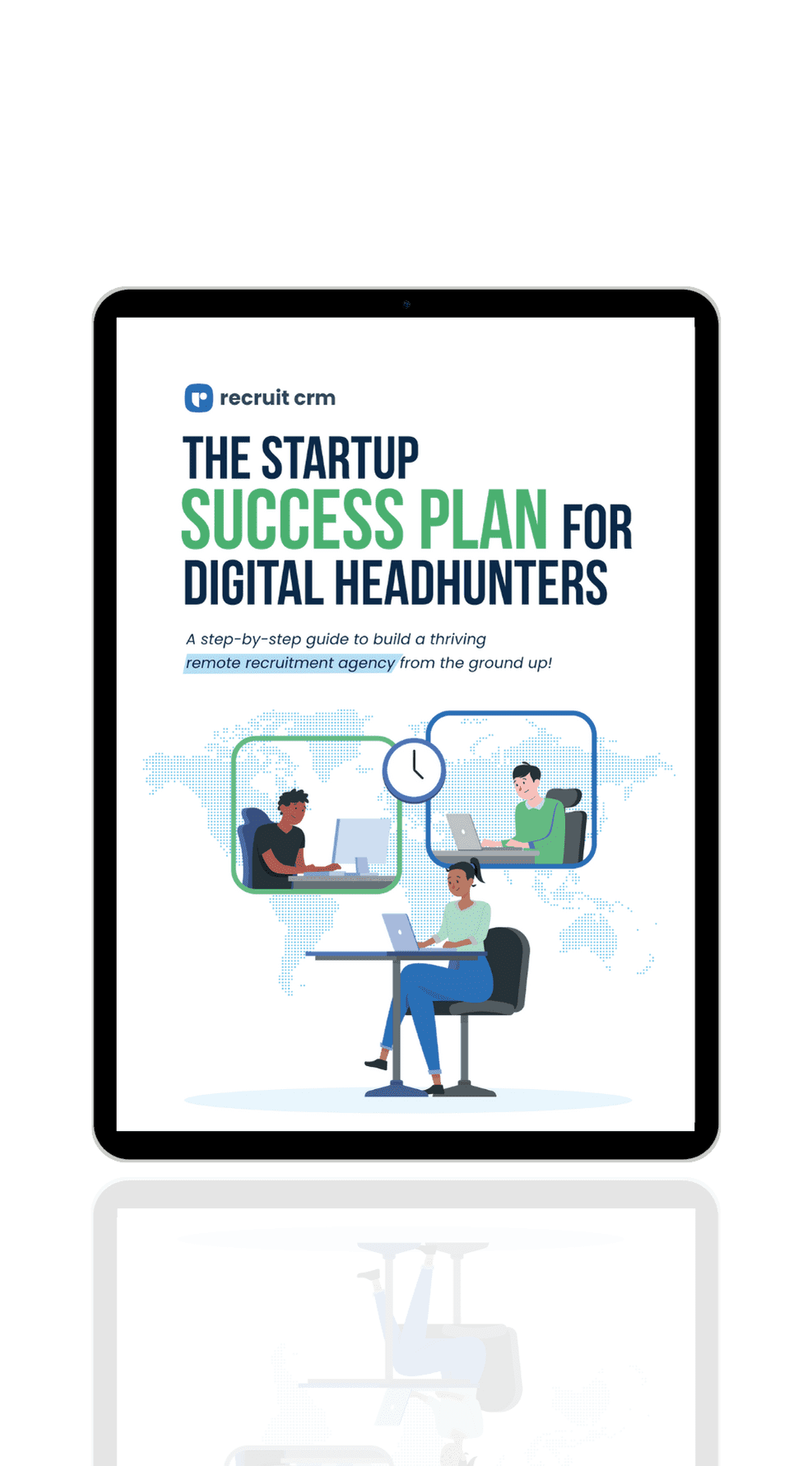
Recruitment startup success plan: Launch your hiring venture to success
" * " indicates required fields
What are the candidate journey touchpoints and how to map it
Before consumers decide to buy, they go through a lengthy thought process. It takes time for them to learn about a company and the product or service it offers before they eventually decide whether they want to make a purchase. This customer journey does not differ too much from the candidate journey, showing that recruitment and sales are very much alike.
Candidates go through multiple steps in the candidate journey before they decide to apply to your company. As a matter of fact, when they make their final decision to apply, the second phase of their journey begins.
Understanding the candidate journey is crucial to improving the overall candidate experience and acquiring the best talent. As the market has become very candidate-centric, it is becoming increasingly harder to get candidates further down your application funnel. Understanding what candidates go through can improve your entire hiring process to ensure that candidates don’t churn or drop out in the process.
What is the candidate journey?
The candidate journey can be defined as the experiences that job seekers go through during the job-hunting process. It starts before candidates apply for a job, and it continues even after you have hired the candidate.
Understanding the candidate journey can improve the candidate experience, lower the cost and time to hire , and build a stronger employer brand .
The candidate journey definition shouldn't vary too much from company to company, though the candidate journey touchpoints may, depending on their unique hiring process.
What are the candidate journey touchpoints?
The candidate journey is a multi-step process that candidates go through in their job hunt. Generally, there are seven candidate journey touchpoints:
- Consideration
- Application
The first three touchpoints can be described as the pre-application phase. In this phase, your job as a recruiter is mainly to engage in recruitment marketing to reach passive job seekers . This means grabbing the attention of your potential candidates, getting them excited to work for your company, and eventually get them to apply.
The pre-application phase of the candidate journey involves all the touchpoints candidates have with your company before applying. These can be both online and offline.
Examples include:
- Viewing your job ads
- Talk to a company representative at a career fair
- Visit your career site
- Visit your company social media pages
- Talk to someone they know at the company
- Any interaction they might have had as a customer
Every touchpoint with your company plays a role in whether potential candidates will turn (or “convert”, as you might say in sales terminology) into actual candidates. That’s why it is crucial to make sure that each touchpoint gives the potential candidates a positive experience.
The pre-application phase consists of three steps:
1. Awareness
These are the first of the candidate journey touchpoints with your company. They make potential candidates aware of who you are, what your organization does and what it’s like to work there. In this stage, candidates are just getting to know you. This could be through jobs or speaking to a current employee.
2. Consideration
When candidates have experienced a few of your touchpoints, they enter the consideration phase, where they determine if they’re interested in working for your company.
During this stage, they may have additional points of contact with your company (like meeting representatives at job fairs or visiting your careers page) that will lead them to the next stage or filter them out of the candidate journey.
It’s essential to keep in mind that potential candidates can move back to the awareness phase from the consideration phase. The candidate journey is not a linear process for everyone, especially in the pre-application stage.
3. Interest
In this step, potential candidates are genuinely interested in working for your company. This is the final step in the thought process before applying.
When potential candidates have reached this step, they are likely to apply unless something happens (like getting a job offer from another company they applied to). There are still several touchpoints at this stage. Common examples include retargeted job ads or candidates emailing to ask questions about the job.
The application phase: application, selection, and hiring
As soon as a candidate starts filling in the application form on your website, they enter the application candidate journey touchpoint. From this moment, you have much more control over how they perceive you and their experiences with you. The application phase involves everything that happens from the moment that candidates fill out the application form to the moment that you hire or reject them.
This phase of the candidate journey has three main steps:
4. Application
The application step naturally starts when the applicants fill out the application form and end when they are rejected or after the job interview(s).
The way you communicate with your candidates during this step is a crucial factor in determining their perception of your company. Also, the way you reject candidates is important to think about. It involves face-to-face communication as its main touchpoint.
At this point, you have an excellent opportunity to show your candidates what your company is all about and why they should work there.
5. Selection
The selection step starts immediately after the interview(s).
During this step, you evaluate your candidates based on their interviews. For the candidate, it means a lot of waiting. While most companies don’t communicate too much with candidates during this stage, you can still generate touchpoints to improve the candidate experience.
For example, you could send an email to thank the candidates for their time and let them know how long it will take before making your decision. You could also send them study materials if they would like to know more about your company. Remember, though, it’s poor practice to fail to supply candidates with updates if this step is taking some time.
The last step in the application phase is when candidates get either hired or rejected after interviews conclude. Many recruiters consider this step to be the final step of the candidate journey.
Nothing could be further from the truth for those seeking to create a great candidate experience. The touchpoint for this stage is the call or email that informs the candidate of the decision. If you reject a candidate, make sure that you let them know why they didn’t make it . Transparency in your recruitment processes significantly improves the candidate experience.
The post-application phase: onboarding
Recruiters often forget the onboarding process. They get so caught up in the hiring process that they often have little time to think about the successful hires they have made. This practice, however, can be damaging to the company.
7. Onboarding
Onboarding your candidates is an essential part of the candidate journey. It has a significant impact on whether your candidate stays at your company after the probation period. This directly correlates with your new starter retention rates.
As a recruiter, you should already be thinking about onboarding before you hire. After all, you don’t want to lose an employee just a month after spending so much time, effort, and resources on the recruitment process.
Onboarding involves different people from different departments. The best practice involves at least one person from the new hire's team and one from HR or hiring. The HR member can take care of company onboarding while the team member carries out the team onboarding.
Mapping out your candidate journey touchpoints
Mapping out the candidate journey is crucial to understanding what your candidates go through and what you can do to improve candidate experience. It can help you improve the journey to ensure that you attract the best candidates, shorten the time to hire and decrease your hiring costs.
Mapping out your candidate journey can be done in three steps:
Step 1: Define your candidate persona
Understanding your ideal candidates is the first step in mapping out your candidate journey. You need to understand whose journey it is that you are mapping, after all. Creating a candidate persona is one way to do this.
Creating candidate personas is similar to creating customer personas . It’s consideration into what your ideal candidate would be and describing them. It’s absolutely fine to have multiple personas for each job.
Candidate personas help you to clarify whose journey you are mapping for what job. This is important because different candidates can have very different journeys. A senior developer, for example, will not have the same journey as a junior legal counsel.
Step 2: Set up the candidate journey framework and identify the needs of the candidate
The different phases and seven steps described above should form the basis of your candidate journey map. This framework is universally applicable as all candidates go through every step of the process, regardless of where they apply.
The basis of every step in the candidate journey is made up of the candidates’ needs. To map out the journey properly, you will need to think about what those needs are and what thoughts and feelings drive the candidates' behavior.
These thoughts might be:
- Awareness: What does this company do? Who are they?
- Consideration: What can this company offer me?
- Interest: What makes this company different from others? Could I see myself working here?
- Application: Has my application been received? Will I get invited for an interview?
- Selection: Do they like me? Did I get a good impression of the company?
- Hire: I got the job!
- Onboarding: What should I be doing? What are my tasks? How do I do this and that?
Contemplating your (potential) candidates' thoughts helps you understand the candidate journey a lot better. Having a hard time knowing what it is that your candidates are thinking during their journey? Try sending out questionnaires after each step in the application phase (application, selection, and hire).
Step 3: Map out candidate journey touchpoints
To map out the journey, you need to know what the touchpoints are between your company and the (potential) candidates.
Touchpoints refer to all the interactions candidates have with your company. Your task is to discover all possible touchpoints that a specific persona can have in every part of the candidate journey.
The number of possible touchpoints that candidates could have is endless, especially in the pre-application phase. This can make it hard to map out every single touchpoint and where your candidate persona will be most beneficial. Think about their behaviors: how do they spend their time? What websites do they often visit? What social media channels are they active on? Try to identify between three and five touchpoints for every step of the journey.
When mapping out the touchpoints, don’t forget to create a list of channels where these interactions take place. Having an overview of the channels makes it easier for you to know where you can reach each persona, at what stage of the journey and for what job.
Using the candidate journey map
You’ve mapped out your candidate journey; now what?
Your map can help you with many things. First of all, you can use it to improve the candidate experience. Candidate experience has become one of the most critical factors in acquiring the best talent. A poor candidate experience can do a lot of damage to both your business and employer brand. The journey map shows you every touchpoint and stage that candidates go through. This helps you get a good overview of what your recruitment process looks like and where you can improve on the candidate experience.
The candidate journey map is also a great tool to help make your recruitment processes more efficient and effective. It allows you to identify bottlenecks within the process and get a good idea of which parts of the process aren’t going well. This way, you can improve both your hiring decisions and shorten your time to hire.
In conclusion: your new talent are people, not products
Candidate journeys and candidate experience are about people and relationships. Heading right back to the beginning of this piece, we talked about how similar the customer journey was to acquiring new talent and the candidate journey.
The crucial difference between products and people is people are living, breathing entities with feelings and emotions. We act on how we feel, so we must consider every interaction we make with those around us.
When it comes to candidate journeys, it’s more crucial than ever. Not only do you want to impress, you need your candidates to feel safe, valued, and informed at every step—even if you decide you don’t have a place for them at the time.
Use the journey and candidate map to look after your people, and you won’t go too far wrong. Use them to make your possible hires feel truly important and cared for, and you’ll succeed in boosting a far more substantial range of candidates through your acquisition funnel.

Adrie is a content strategist at Foleon, and the former Head of Content & Branding at Recruitee!
Get the MidWeekRead
Get the exclusive tips, resources and updates to help you hire better!

Hire better, faster, together!
Bring your hiring teams together, boost your sourcing, automate your hiring, and evaluate candidates effectively.


Candidate Journey
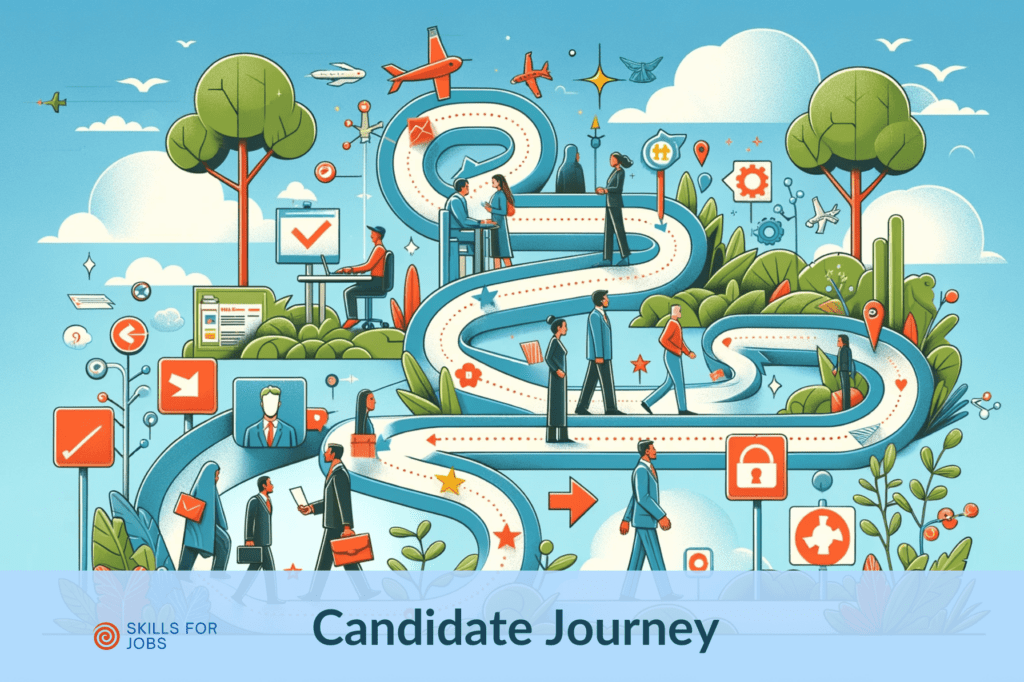
ALTERNATIVE BEZEICHNUNGEN
- Bewerberreise
- Kandidatenreise
- Bewerbungsprozess
WAS IST CANDIDATE JOURNEY?
Definition:.
Die Candidate Journey beschreibt die Reise , die ein potenzieller Bewerber durchläuft, von der ersten Kenntnisnahme einer Stellenanzeige bis hin zur Einstellung oder Absage. Dieser Prozess umfasst verschiedene Phasen, in denen der Bewerber mit dem Unternehmen in Kontakt tritt, Informationen sammelt und Entscheidungen trifft. Die Gestaltung einer positiven Candidate Journey ist entscheidend für die Arbeitgeberattraktivität und kann einen erheblichen Einfluss auf die Qualität der Bewerbungen und das Employer Branding haben.
Die Candidate Journey beginnt oft mit der Bewusstseinsphase , in der potenzielle Kandidaten zum ersten Mal von einer Stelle oder einem Unternehmen erfahren. Dies kann durch Stellenanzeigen, Empfehlungen, Social Media, oder andere Kanäle geschehen. In der darauffolgenden Überlegungsphase sammelt der Kandidat Informationen über das Unternehmen und die Stelle. In dieser Phase ist es wichtig, dass das Unternehmen transparente, ansprechende und umfassende Informationen bereitstellt.
Die Bewerbungsphase ist ein kritischer Punkt der Candidate Journey. Ein einfacher, klar strukturierter Bewerbungsprozess ist hier entscheidend. Nach der Bewerbung folgt die Auswahlphase , in der Interviews und Bewertungsverfahren stattfinden. Eine transparente Kommunikation und ein respektvoller Umgang mit den Bewerbern sind hier besonders wichtig. Schließlich endet die Candidate Journey mit der Einstellungsphase oder einer Absage. Selbst im Falle einer Absage kann eine positive Erfahrung dazu beitragen, dass der Kandidat das Unternehmen weiterhin positiv wahrnimmt und möglicherweise zu einem späteren Zeitpunkt erneut eine Bewerbung in Erwägung zieht.
- Ein Unternehmen, das einen interaktiven Karrierebereich auf seiner Website hat, wo Bewerber sich über verschiedene Karrierewege informieren können, verbessert die Candidate Journey in der Bewusstseins- und Überlegungsphase.
- Ein schneller und unkomplizierter Online-Bewerbungsprozess mit klaren Anweisungen und sofortiger Eingangsbestätigung kann die Candidate Journey während der Bewerbungsphase positiv beeinflussen.
- Ein Feedback-System , bei dem Kandidaten nach ihrem Bewerbungsgespräch ihre Erfahrungen teilen können, hilft Unternehmen, die Candidate Journey kontinuierlich zu verbessern und zeigt den Kandidaten, dass ihre Meinung wertgeschätzt wird.
Video zum thema

Mit dem Laden des Videos akzeptieren Sie die Datenschutzerklärung von YouTube. Mehr erfahren
Video laden
YouTube immer entsperren
LINKS ZUM THEMA
- Seite „Candidate Experience“. In: Wikipedia – Die freie Enzyklopädie. Bearbeitungsstand: 19. September 2022, 19:10 UTC. URL: https://de.wikipedia.org/w/index.php?title=Candidate_Experience&oldid=226302550 (Abgerufen: 19. Januar 2024, 08:39 UTC)
Verfasst von Thomas Löding , zuletzt aktualisiert am 18. März 2024
NEU Effiziente und aussagekräftige Mitarbeitendenumfragen - mehr erfahren
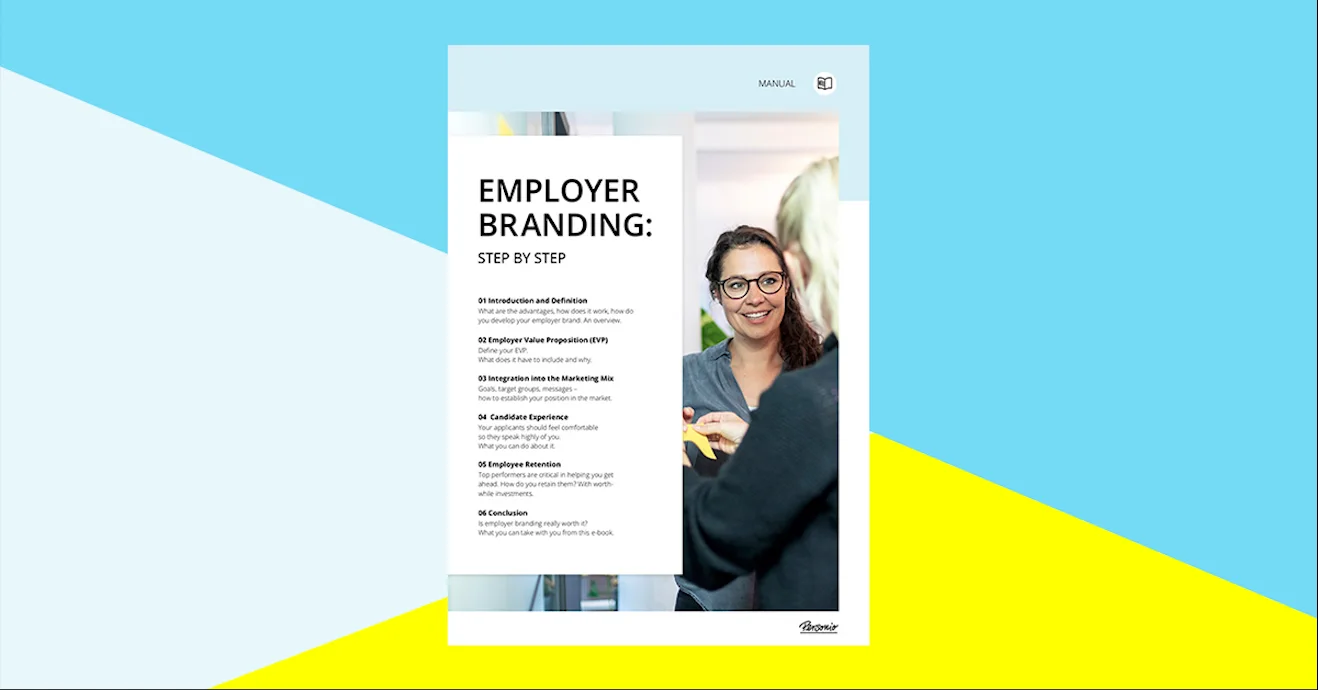
Employer Branding
Neueste beiträge, beliebteste inhalte, candidate journey: in 7 phasen zur traumreise.

Immer wieder sagen Ihnen vielversprechende Bewerber kurzfristig ab? Das könnte mit einer verkorksten Candidate Journey zusammenhängen. Mit unseren Tipps werden Sie ein guter Reiseleiter, der die Kandidaten zum Strahlen bringt. Und zur Unterschrift!
- 1 Candidate Journey – die Definition
- 2 Warum brauchen Sie eine gute Candidate Journey?
- 3 Wie Sie die 7 Phasen der Candidate Journey gestalten
- 4 Machen Sie Ihr Team zu Candidate-Journey-Agenten
Candidate Journey – die Definition
Als Candidate Journey bezeichnet man den Weg, den Kandidaten vom ersten Kontaktpunkt mit einem Unternehmen bis hin zum Abschluss des Bewerbungsverfahrens, zurück legen. Im Unterschied zur Candidate Experience – also den positiven und negativen Erfahrungen, die Kandidaten im Rahmen des Bewerbungsprozesses machen – beschreibt die Candidate Journey den Prozess als solchen – und zwar aus Sicht des Kandidaten .
Warum brauchen Sie eine gute Candidate Journey?
Obwohl sie oft stiefmütterlich behandelt wird, hat die Candidate Journey gerade in Zeiten des Fachkräftemangels einen unschätzbaren Einfluss auf Ihr Hiring und Ihr Employer Branding . Denn 72 Prozent der Kandidaten teilen negative Erfahrungen während einer Candidate Journey direkt in ihren digitalen Netzwerken. Außerdem lesen Kandidaten mindestens sechs Unternehmens-Rezensionen auf Bewertungsportalen – und 55 Prozent von ihnen meiden Unternehmen mit überwiegend negativen Kommentaren. Eine positive Candidate Journey ist also wichtig, damit Sie während des Fachkräftemangels bei guten Bewerbern punkten, Ihr Employer Branding stärken und sich entscheidende Wettbewerbsvorteile sichern.
Die besten Tipps für Ihr Employer Branding
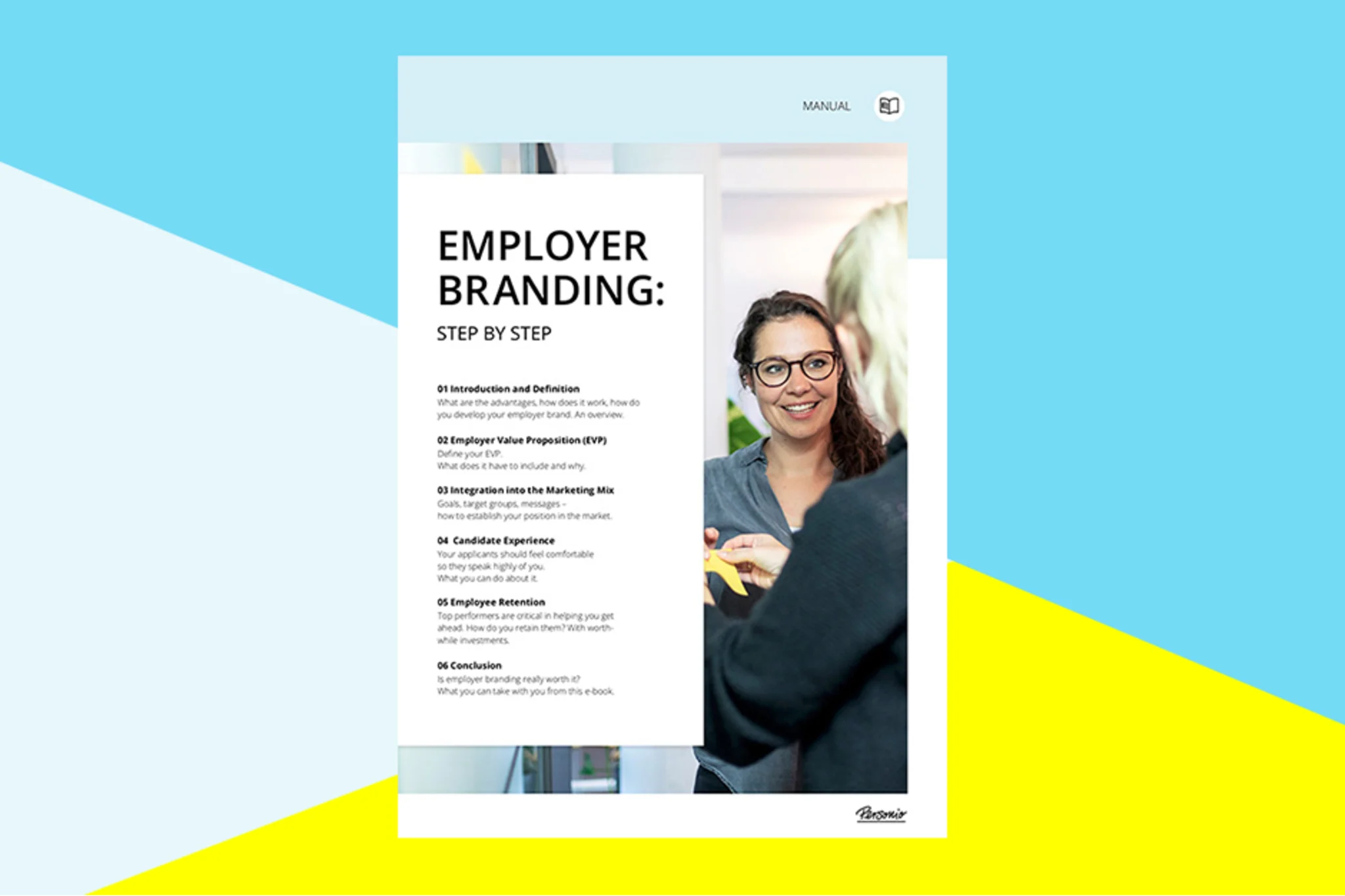
Wie positioniert man sich erfolgreich als attraktiver Arbeitgeber? In diesem Leitfaden finden Sie die wichtigsten Schritte.
Wie Sie die 7 Phasen der Candidate Journey gestalten
Während eine Urlaubsreise nie zu lang sein kann, sollte eine Candidate Journey kurz und knackig sein. Denn Spitzentalente sind in der Regel nur für durchschnittlich 10 Tage auf dem Arbeitsmarkt verfügbar. Bei den meisten Unternehmen dauert die Candidate Journey aber bedeutend länger – im Durchschnitt 42 Tage. Damit können ihnen gute Bewerber durch die Lappen gehen. Diese 7 Phasen sollten also sitzen, damit Sie Top-Bewerber zu engagierten Mitarbeitern machen können.
Die 7 Phasen der Candidate Journey

Phase 1 – AUFMERKSAMKEIT
Der Kandidat erfährt von der offenen Stelle. Das kann über Jobportale, über soziale Kanäle Ihres Unternehmens, einen Artikel in Ihrem Corporate Blog und den anschließenden Besuch Ihrer Karriereseite oder durch eine persönliche Empfehlung erfolgen.
Ihre Kernaufgaben
Erarbeiten Sie schon vor der Stellenausschreibung ein gründliches Verständnis des idealen Kandidaten. Entwickeln Sie eine passende Candidate Personas . Dies optimiert die Stellenanzeige.
Phasen 2 und 3 – ÜBERLEGUNG UND INTERESSE
Diese Phasen überschneiden sich teilweise, denn der Kandidat versucht nun, ein Gefühl für Ihr Unternehmen als Ganzes zu bekommen. Er möchte die Werte Ihres Unternehmens, die Mission und auch die Unternehmenskultur kennenlernen.
Haben Sie Ihr Employer Branding im Griff. Einer LinkedIn-Studie zufolge durchsuchen 52 Prozent aller aktiven Kandidaten das Internet nach relevanten Informationen über den potenziellen Arbeitgeber. Die besten Arbeitgebermarken sind über alle Kommunikationskanäle hinweg präsent – in sozialen Medien, auf den Unternehmensseiten und auf der Karriereseite. Sorgen Sie dafür, dass über die Kanäle hinweg eine konsistente Geschichte erzählt wird. Machen Sie zufriedene Mitarbeiter zu eigenen Markenbotschaftern und tragen Sie ihre Geschichten nach außen, um Kandidaten mit persönlichen Erlebnissen anzuziehen. Denn Kandidaten glauben den Mitarbeitern eines Unternehmens dreimal mehr als dem Unternehmen selbst, wenn es um die Arbeitserfahrung als solche geht.
Phase 4 – BEWERBUNG
Dies ist die wohl wichtigste Phase der Candidate Journey. Denn langwierige, komplizierte Bewerbungsverfahren beeinflussen die Erfahrung und das Verhalten des Kandidaten in der Regel negativ. Laut CareerBuilder wird jeder fünfte Kandidat eine länger als 20 Minuten dauernde Onlinebewerbung abbrechen .
Prüfen Sie unbedingt, ob Ihre Ausschreibungen und Ihr Online-Bewerbungsprozess mobilfreundlich sind! Laut einer Glassdoor-Studie benutzen 58 Prozent der Kandidaten ihr Smartphone zur Stellensuche. Websites, die nicht „fully responsible" sind, vertreiben Bewerber: Mehr als 50 Prozent der Kandidaten brechen die Bewerbung aufgrund von technischen oder Formatgründen ab. Kein Wunder – sie brauchen achtmal soviel Zeit zum Ausfüllen ihrer Bewerbung.
Seien Sie in der Kommunikation während des gesamten Bewerbungsprozesses immer pünktlich, transparent und konsistent . Informieren Sie den Kandidaten in einem engen Rhythmus über den Stand seiner Bewerbung. Gehen Sie auf Nachfragen persönlich und individuell ein. Vergessen Sie Standardschreiben!
Phase 5 – AUSWAHL
Während der Auswahlphase vergleichen die Kandidaten potenzielle Arbeitgeber, indem sie detailliertere Informationen sammeln. Insbesondere während des Bewerbungsgesprächs, bei dem die meisten Kandidaten zum ersten Mal sagen können, ob sie sich vorstellen können, für Ihr Unternehmen zu arbeiten, oder nicht. Daher ist es wichtig, hier so transparent wie möglich zu sein.
Vermitteln Sie dem Kandidaten in dieser Phase der Candidate Journey realistisch und transparent, wie es in Ihrem Unternehmen zugeht. Informieren Sie ihn über die Unternehmenskultur, die Struktur der Belegschaft, die exakten Herausforderungen der Position.
Ermutigen Sie den Kandidaten, so viele Fragen wie möglich zu stellen und auch alle eventuellen Bedenken anzusprechen. Im schlimmsten Fall könnte er den Prozess durch ungelöste Probleme oder offene Fragen abbrechen.

So ermitteln Sie den Cultural Fit von Kandidaten
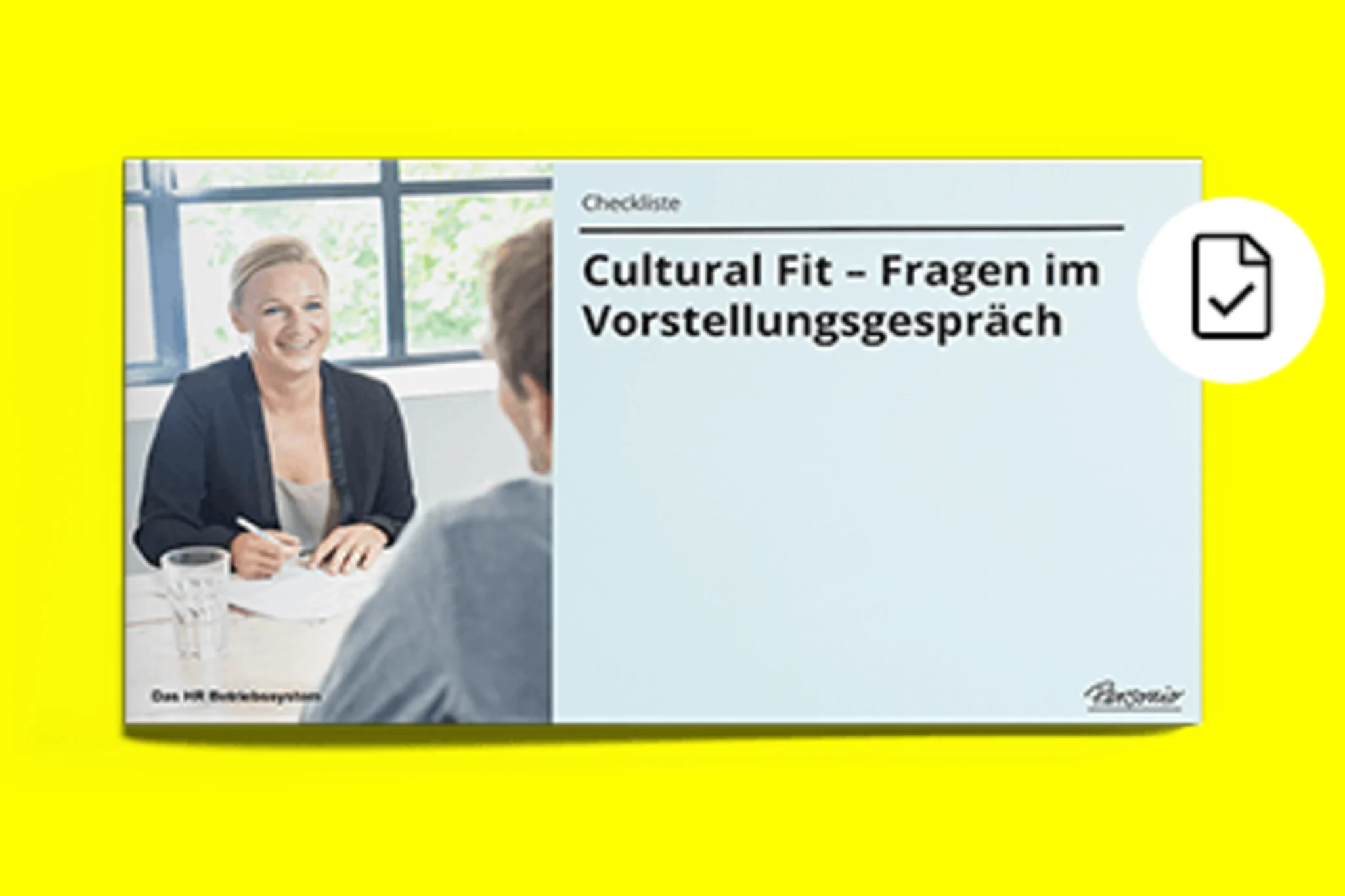
Nur die richtigen Mitarbeiter machen ein Unternehmen erfolgreich. Mit diesem Fragebogen klopfen Sie im Vorstellungsgespräch an das Thema “Cultural Fit” ab.
Phase 6 – EINSTELLUNG
Bei der Entscheidung pro oder contra Einstellung sind Arbeitgeber und Bewerber gleichermaßen gefordert. Alles, was dem eigentlichen Jobangebot vorausgegangen ist, kann die finale Entscheidung beider Parteien beeinflussen. Jeder Fehler, jedes noch so kleine Versehen in den vorangegangenen Phasen der Candidate Journey könnte den potentiellen Mitarbeiter negativ beeinflussen. Betrachten und behandeln Sie die Candidate Journey daher immer als einen ganzheitlichen, einheitlichen Prozess .
Sorgen Sie dafür, dass ein unkompliziertes Bewerbungsverfahren, eine transparente und zeitnahe Kommunikation mit den Beteiligten sowie eine transparente Darstellung der Unternehmenskultur und -werte Hand in Hand gehen – es sind allesamt klare Signale für einen Kandidaten, dass Ihr Unternehmen organisiert, professionell und ein attraktiver Arbeitgeber ist.
Phase 7 – ONBOARDING
Der Kandidat ist an Bord – und Ihr Job als HR ist erledigt? Mitnichten: So verlassen beispielsweise 28 Prozent der Neueinstellungen innerhalb von 90 Tagen das Unternehmen . Die Einstellung ist ein zeit- und kostenintensiver Prozess. Setzen Sie ihn nicht durch eine negative Onboarding-Erfahrung aufs Spiel.
Beginnen Sie bereits vor dem ersten Arbeitstag des Kandidaten mit dem Onboarding: Informieren Sie ihn vor dem ersten Tag per Mail über seinen Start, begleiten Sie ihn durch den ersten Tag, legen Sie vielleicht ein kleines Begrüßungspaket mit einer persönlichen Notiz auf den Arbeitsplatz, organisieren Sie eine Vorstellungsrunde im Team.
Gestalten Sie einen abteilungsübergreifenden Prozess und bringen Sie Ihren neuen Mitarbeiter mit einem erfahrenen Mitarbeiter (auch aus einer anderen Abteilung) zusammen, um ihm ein gutes Gefühl zu vermitteln.
Vereinbaren Sie Einzelgespräche mit dem direkten Vorgesetzten. Laut einer globalen LinkedIn-Umfrage zu bevorzugten Onboarding-Techniken antworteten 96 Prozent, dass Einzelgespräche mit dem direkten Vorgesetzten ihre wichtigste Onboarding-Erfahrung sei.
Machen Sie Ihr Team zu Candidate-Journey-Agenten
Damit Sie immer auf dem neuesten Stand in puncto Candidate Journey sind, sollten Sie Mitarbeiter aus Ihrem Unternehmen regelmäßig durch den Bewerbungsprozess schicken. Quasi als interne Qualitätsprüfer.
So vermeiden Sie Betriebsblindheit in Abläufen und erhalten außerdem die Garantie, dass Sie auf der Candidate Journey selbst noch so kleine Details nicht übersehen, die den Kandidaten eventuell negativ beeinflussen können. Wenn Ihnen das gelingt, verdient Ihre Candidate Journey das Siegel „Traumreise“.
Strukturierter onboarden mit Personio

Recruitment software built for the new way of hiring
Streamline recruitment from acquire to hire ->
Automatically pinpoint top performers fast ->
Kick-off onboarding before day one ->
Hire elite healthcare teams that elevate patient care ->
Medium to Large
Recruit, run, and grow a winning team with Elevatus
Recruit the best educators for your school
Financial Services
Secure the best finance professionals fast
Build public sector teams that you can trust
+ View all industries
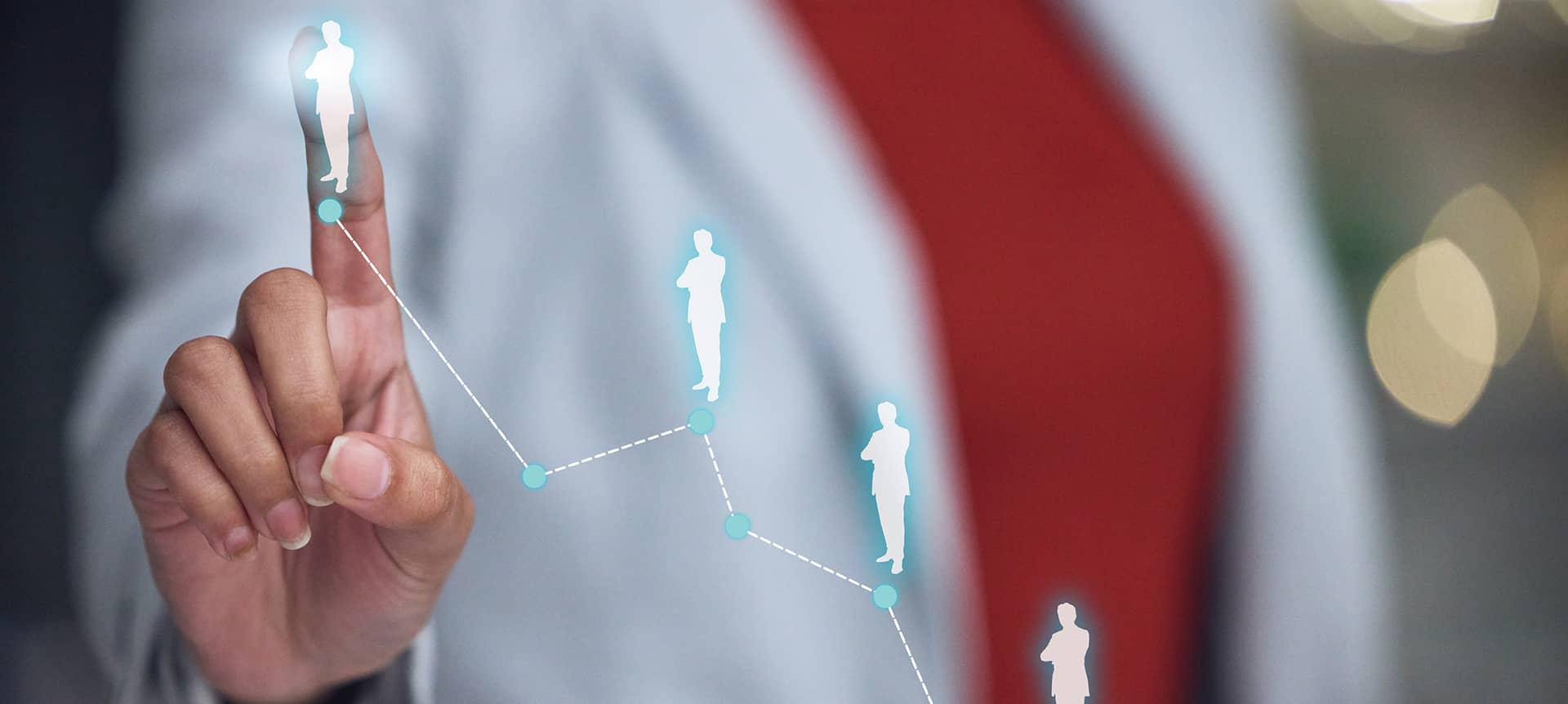
Candidate Journey: The Ultimate Guide to Unlock Hiring Success
April 2, 2023

Tima Rassool
Content Writer
Turn top talent to employees fast
Hire, assess, onboard and manage top talent for every job. See how Elevatus streamlines everything; from acquire to new hire.
Don't miss a thing!
Stay one step ahead. Subscribe and get the latest updates, news, and insights from Elevatus straight to your inbox.
Sometimes, it takes us quite some time to make up our minds when we purchase something online. We read reviews, we ask our friends, we Google the product or service, and we scroll endlessly through other websites. Recruitment is no different.
When candidates apply for jobs, they are looking to build a certain level of trust with your company before they decide to click on the “Apply” button. Candidates are taken through various touchpoints and interactions with your company before, during, and after the hiring process. This is called a candidate journey.
Now you may ask… why is the candidate journey so important? What a great question!
Today, we will touch base on what is a candidate journey and how to craft the best one for your company!
What is the candidate journey?

Job hunting is no easy feat for candidates. Especially since they have to go through a series of experiences that can make or break their impression of your company. That’s why it’s crucial for businesses to create a memorable candidate experience journey.
So what’s a candidate journey, you ask? It’s a fancy way of saying all the different ways an active job seeker interacts with your company during the hiring process. From the first time they hear about the job opening to the moment they receive a job offer – every touchpoint matters.
To make sure your company is putting its best foot forward, you must create a positive candidate experience that is seamless and above all, interactive. This visual representation will help you see the hiring process from the candidate’s perspective. Is it smooth sailing? Is it memorable? Or are there some rough patches along the way?
By understanding your candidate journey stages, you’ll be able to gather valuable information that can guide, boost, and fine-tune your recruitment strategy. Plus, you’ll be better equipped to tailor your messaging to meet their needs. After all, finding the right person for the job is a two-way street.
So don’t let a bumpy candidate journey scare away your top talent! Take the time to map it out and make improvements. Your future employees will thank you.
What are the candidate journey stages?

Let’s be real here: creating an outstanding candidate experience is a marathon, not a sprint. The candidate journey itself consists of six critical stages, and each presents a unique opportunity for recruiters to make a lasting impression. With a tailored approach at each stage, recruiters can shape the candidate’s behavior, attitude, and overall experience. With that being said, we break down the stages for you below, so you can take your candidate recruitment journey from where it is now – to where you want it to be!
1. Awareness
The journey of every active job seeker begins with awareness; a crucial stage where they discover and learn more about your job opening. Now, they might stumble upon it on LinkedIn, Indeed, Glassdoor, or your branded career page. But attracting top-notch talent at this critical stage can ultimately save both you and the candidate valuable time.
To achieve this, it’s essential to create a strategic plan that involves crafting an ideal candidate persona and incorporating it into the job description. Not only that, but you also need to make sure that the content on your career page is relevant, accurate, and not misleading.
2. Consideration
After candidates take the time to learn more about your company, the next stage involves considering your company as a potential employer. This is where they begin to research more about your culture, work environment, and perks and benefits. They might even surf your website, social media platform, or online review sites. Only then will they be able to develop an initial impression of your company and begin to assess whether or not it really aligns with their personal values and career goals.
3. Interest
This stage is a pivotal one. Why you may ask? Simply because the candidate in this stage either cultivates a strong interest in your company or loses interest altogether. Keep in mind that candidates are always exploring different job opportunities and trying to gauge if they would be a good fit for the role. Therefore, to pique their interest, you must showcase your unique company culture, highlight your competitive advantages, and provide a glimpse into what it would be like to work for your company.
4. Application
Now, for the most tricky part: the application process. After top talent feels enticed enough to join your company, they’ll take the initiative to apply to one of your vacancies. This candidate journey stage ultimately marks the start of the recruitment process. So the job seekers will send in their applications and cover letters for review. Essentially recruiters must craft compelling job descriptions in order to get more qualified candidates to apply.
5. Selection
Once candidates submit their applications, it’s showtime! Now, the ball is in the recruiter’s court. The selection process might differ from one company to the other. For example, this stage might include a video assessment, background check, reference check , or talent assessment. At the end of the stage, recruiters will be able to seamlessly gauge the suitability and fit of the candidates in order to move them to the most important stage; the hired stage.
This is the last stage of the candidate experience journey – where the candidate either gets hired or rejected based on their performance. However, all the previous steps will dictate whether or not the candidate will accept the offer or spread negative word of mouth. For example, if they had a seamless candidate journey, they’ll accept the offer in a heartbeat. On the other hand, if they experienced a complicated hiring process, they’ll spread the word to their network.
What makes a good candidate journey?
When it comes to crafting an excellent candidate journey, there’s no one-size-fits-all. All it takes is to take candidates through a seamless process from start to finish. The end goal is simple: make sure the hiring process is memorable and the offer is irresistible. Now, to make sure top candidates are having a blast throughout the hiring process, there are a few things you need to set in stone. The first is clear and transparent communication.
Who doesn’t love being kept in the loop, right? The second is a smooth-sailing hiring process. At the end of the day, candidates will be more enticed to accept an offer when the hiring process takes days, not months. The third is your employer branding . Your candidates need to know more about the company culture and work environment before deciding to be a part of it.
How to map out the perfect candidate journey?

Each stage in the candidate journey holds the power to determine whether your best candidates will blossom into exceptional hires or drop out of the process altogether. To make sure the candidate journey is your strongest differentiator – there are a couple of steps that you must take first. Wondering what they are? We’ve broken them down into easily digestible steps for you.
Step 1: Identify your candidate persona
Crafting a stellar candidate journey starts with one key ingredient: the candidate. So, before you hit the recruitment trail, it’s crucial to come up with a very captivating candidate persona – a compelling one that embodies the perfect fit for your role. Think: skills, drive, passion, character, and the demographics that best align with your company. By creating the ideal candidate persona, you’ll not only attract top talent, but you’ll also ignite a powerful sense of purpose and connection.
Step 2: Pinpoint your candidate’s needs at every stage
During the candidate journey, it’s important to understand their wants and needs at each stage. To do this, identify what motivates the candidate’s behavior, thoughts, and emotions. Here are the candidate’s needs at each stage:
- Awareness: The candidate wants to learn more about the company and what it does.
- Consideration: The candidate in this stage considers the benefits of joining the company.
- Interest: The candidate wants to know what sets this company apart from others.
- Application: The candidate is eager to learn more about the duration of each hiring stage.
- Selection: The candidate wants to know if they are qualified to make the cut.
- Hire: The candidate wonders what will happen after they accept the job offer.
Step 3: Determine the candidate journey touchpoints
Attracting top talent is not just about posting job ads and hoping for the best. It’s about creating a personalized experience for your ideal candidate at every step of their journey. But, where do you start? Well, it’s simple – put on your candidate persona hat and start thinking like them!
Picture yourself as the candidate, and ask yourself these questions: Where can I learn more about the company? How can I compare this company to its competitors? How do I apply for the position? What happens during the selection process? What do I do if I get hired? The answers to these questions will help you identify all the potential touchpoints that your candidate might have with your company.
Now, we know there are a ton of candidate journey touchpoints to consider, but don’t worry! We’re here to help you prioritize. To start, we suggest learning more about your candidates’ online behavior. Do they use social media? Do they frequent job comparison sites? Or do they prefer to visit your website directly? Knowing these answers will help you tailor your approach and focus on the touchpoints that matter most to your ideal candidate.
Step 4: Create a visual representation
Now, you’ve made it to the final step – the fun part! It’s time to take all the insights you’ve gained from the previous steps and bring them to life in a visually stunning way. So, it’s time to let your creative juices flow!
There is no right or wrong way to do this. You can choose the method that works best for you. You can sketch it out on a whiteboard, add some colourful sticky notes, or go all out and print it on a massive billboard. The sky’s the limit, and the ball is in your court!
Our only suggestion is to ensure that the information is presented in a way that’s easy to understand, visually appealing, and less complex. You want to create a visual map that’s a feast for the eyes and helps you tell the story of your candidate’s journey.
So, go ahead, unleash your creative side, and have some fun creating a candidate journey map that’s as unique as your company’s culture.
Build an exceptional candidate experience with recruitment software

We’re sure you’re well aware of the incredible benefits of recruitment software. But did you know that it can monumentally create a wonderful candidate journey? So, what do we mean by that?
A candidate’s journey is no different than a buyer’s journey. Buyers look for services and products to purchase, whereas candidates look for compelling job opportunities. This is ultimately why candidates need to be treated just like customers. In the same way, you choose your candidates, your candidates are choosing you too.
To create a wonderful candidate experience, you need to have a solid understanding of what the candidate’s journey should look like. Nowadays, companies and talent acquisition leaders need to focus more on the candidate experience, as the failure to do so could have negative implications on the brand image. This is because a large percentage of candidates share their negative experiences online and it’s very easy for such stories to spread like wildfire on social media channels.
That’s a wrap!
Now that you have your candidate experience map, you’re ready to power up your recruitment efforts and create a seamless and delightful candidate experience. So go ahead and put your map to work!
With your journey map in hand, you can analyze every step of the process and identify bottlenecks that might have otherwise gone unnoticed. By crafting your unique map, you will gain valuable insights into the strengths and weaknesses of your recruitment process and put your research findings into action.
And you’re all set! Good luck and have fun creating your own unique candidate journey map. If you have any questions, feel free to drop us a line!
A wordsmith, storyteller, and content strategist – Tima is an MBA graduate with 6+ years of experience in the world of HR. With over 2,000 blogs under her belt, Tima's expertise and insights have helped businesses across the globe take their recruitment to the next level and stay ahead of the curve.
You may also like...

Lead the Pack in 2024:...
As you sit down to review your recruitment metrics, a...
April 25, 2024

Discover Recruitment Analytics with EVA-REC:...
"Data is power" – a phrase that becomes more relevant...
April 18, 2024

From Qatayef to KPIs: 12...
The holy month is upon us, which means it's a...
March 17, 2024

2024’s Guide to Winning Over...
It's that feeling again. You've posted the job listings, and...
February 8, 2024
What's trending
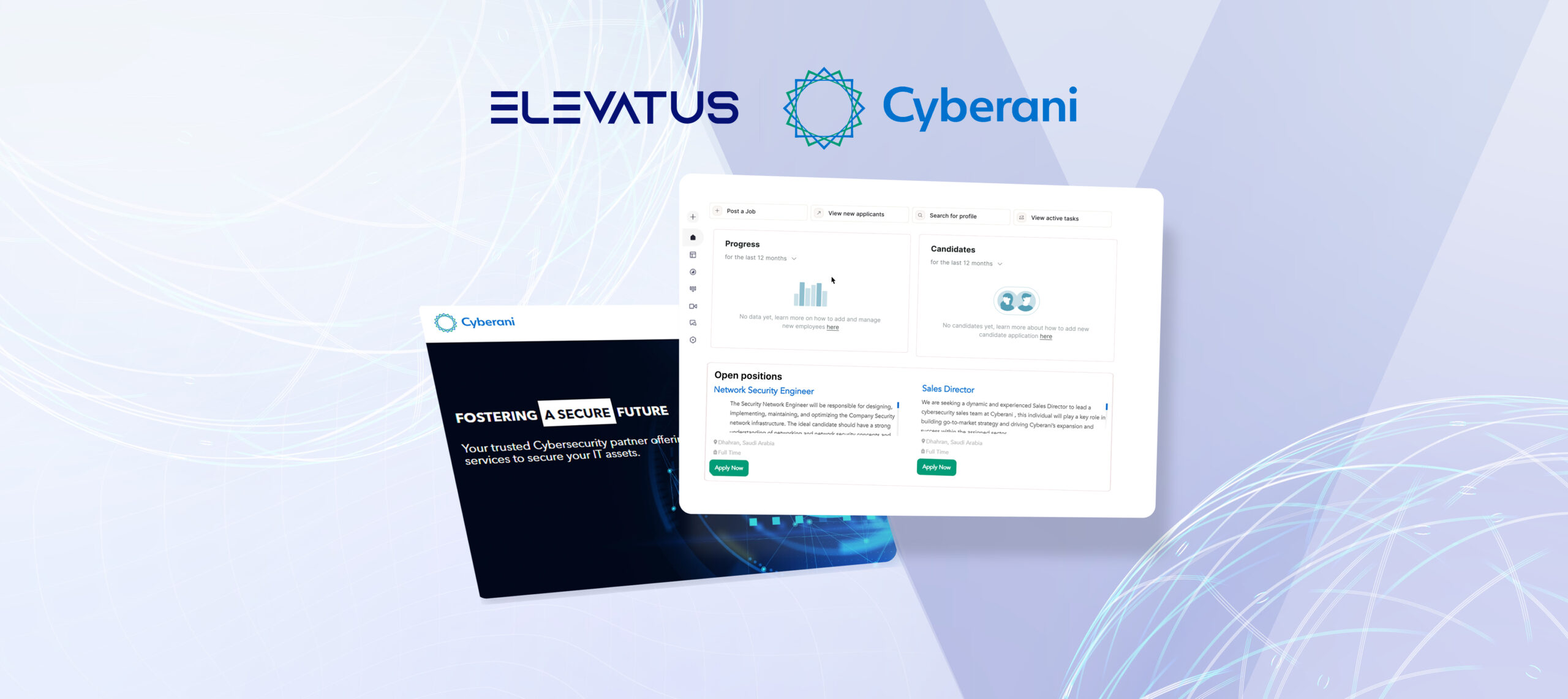
Press Releases
Cyberani Partners with Elevatus to...
RIYADH, May 12th, 2024 – Elevatus, a pioneer...
June 11, 2024

Hiring Strategies
Revolutionary Strategies for Turbocharging Your...
As you click through yet another batch of...

Our Solutions
10 Reasons Why Elevatus is...
The world of recruitment is no longer as...

Recruitment Software
Recruitment Automation Software: Bridge the...
The second quarter of the year has already...
Candidate Journey - Die 6 Phasen zur erfolgreichen Einstellung
Die Candidate Journey ist ein entscheidender Bestandteil des modernen Recruiting-Prozesses. Sie beschreibt den Weg, den Bewerber:innen von der ersten Berührung mit einem Unternehmen bis zur Einstellung und darüber hinaus durchlaufen.
Dieser Prozess hat sich in der heutigen digitalen Welt durch die Vielzahl von Informations- und Interaktionsmöglichkeiten deutlich weiterentwickelt und ist zu einem wichtigen Instrument für Unternehmen geworden, um Talente erfolgreich anzuziehen und zu binden.
1. Definition und Bedeutung
Die Bewerber:innen Journey oder auch Candidate Journey umfasst den gesamten Prozess, den Bewerber:innen von der ersten Wahrnehmung eines Unternehmens bis zur Einstellung und darüber hinaus durchlaufen.
In einer Zeit, die von Digitalisierung und einer Vielzahl von Informations - und Interaktionsmöglichkeiten geprägt ist, hat sich dieser Prozess deutlich weiterentwickelt und ist zu einem komplexen und vielschichtigen Bestandteil des modernen Recruiting-Prozesses geworden.
Eine positive Candidate Journey ist nicht nur entscheidend, um potenzielle Bewerber:innen anzulocken, sondern auch, um die besten Talente für das Unternehmen zu gewinnen und langfristig zu halten.
Sie dient als Leitfaden für Unternehmen , um Bewerbende durch den gesamten Auswahl- und Einstellungsprozess zu führen und dabei eine positive Erfahrung zu gewährleisten .
Unterschied zwischen Candidate Journey und Candidate Experience
Während die Candidate Journey den gesamten Prozess von der ersten Wahrnehmung bis zur Einstellung beschreibt, bezieht sich die Candidate Experience auf die individuellen Erfahrungen und Eindrücke, die Bewerber:innen während dieser Prozesse sammeln.
Die Candidate Experience ist somit ein Teil der Candidate Journey und wird durch verschiedene Berührungspunkte und Interaktionen mit dem Unternehmen geprägt.
Eine gut gestaltete Candidate Journey trägt dazu bei, eine positive Candidate Experience zu schaffen.
Indem sie einen reibungslosen , transparenten und ansprechenden Bewerbungsprozess ermöglicht und Bewerbenden das Gefühl gibt, wertgeschätzt und respektiert zu werden.
2. Die 6 Phasen der Candidate Journey
1. anziehung .
Die Reise beginnt, wenn potenzielle Kandidat:innen zum ersten Mal auf das Unternehmen aufmerksam werden.
Dieser Schritt kann auf verschiedene Arten erfolgen, sei es durch:
- Stellenanzeigen,
- Empfehlungen von Freunden
- oder Kollegen,
- oder auch durch die Präsenz des Unternehmens auf Jobmessen oder in den Medien.
Wichtige Faktoren in dieser Phase sind die Sichtbarkeit und Attraktivität des Unternehmens als Arbeitgeber:in.
Ein ansprechender Online-Auftritt , eine gut gestaltete Karriereseite und eine positive Unternehmenskultur können dabei helfen, das Interesse potenzieller Bewerber:innen zu wecken und sie dazu zu ermutigen, sich näher mit dem Unternehmen zu beschäftigen.
Beispiel:
Ein Softwareunternehmen nutzt seine Social-Media-Präsenz , um regelmäßig Einblicke in die Unternehmenskultur zu geben und Mitarbeiter:innengeschichten zu teilen. Dadurch erhalten potenzielle Bewerber:innen einen authentischen Eindruck vom Arbeitsalltag im Unternehmen und fühlen sich möglicherweise stärker angezogen, sich weiter mit dem Unternehmen zu befassen.
2. Information
Nachdem potenzielle Kandidat:innen auf das Unternehmen aufmerksam geworden sind, suchen sie oft nach weiteren Informationen, um mehr über das Unternehmen, seine Kultur , Werte und offenen Positionen zu erfahren.
Eine transparente und informative Karriereseite , die Einblicke in das Unternehmen bietet, sowie Präsenz auf Bewertungsplattformen wie Glassdoor oder/und in sozialen Medien sind hier entscheidend.
Positive Bewertungen und Erfahrungsberichte von aktuellen und ehemaligen Mitarbeiter:innen können das Vertrauen in das Unternehmen stärken und potenzielle Bewerber:innen dazu ermutigen, sich zu bewerben.
Beispiel :
Ein Einzelhandelsunternehmen stellt auf seiner Karriereseite Videos von Mitarbeiter:innen bereit, in denen sie über ihre Erfahrungen im Unternehmen sprechen und Einblicke in ihre tägliche Arbeit geben. Dadurch erhalten potenzielle Bewerber:innen einen authentischen Einblick in die Unternehmenskultur und können besser einschätzen, ob das Unternehmen zu ihren eigenen Werten und Vorstellungen passt.
3. Bewerbung
Die Bewerbungsphase ist ein entscheidender Schritt in der Candidate Journey. Hier entscheiden sich potenzielle Bewerber:innen, ob sie den nächsten Schritt gehen und sich aktiv um eine Stelle im Unternehmen bewerben möchten. Ein einfacher, benutzerfreundlicher Bewerbungsprozess ist hier von großer Bedeutung.
Formulare sollten leicht zugänglich sein und die erforderlichen Informationen klar und verständlich abfragen. Zu lange oder komplizierte Bewerbungsformulare können potenzielle Bewerber:innen abschrecken und dazu führen, dass sie den Bewerbungsprozess vorzeitig abbrechen.
Ein Technologieunternehmen bietet potenziellen Bewerber:innen die Möglichkeit, sich über verschiedene Kanäle zu bewerben, einschließlich einer benutzerfreundlichen Oberfläche wie PitchYou .
Hier erhalten Bewerber:innen die Möglichkeit, ihre Bewerbung über WhatsApp durchzuführen, mit automatisierten Interviews. Dadurch wird der Bewerbungsprozess stark vereinfacht und die Hürden für potenzielle Bewerber:innen gesenkt.
Automatisierte Interviews – eine einmalige Candidate Experience für Bewerber:innen!

4. Auswahl
In der Auswahlphase finden Gespräche, Vorstellungsgespräche und möglicherweise auch Assessment-Center statt. Eine respektvolle und wertschätzende Kommunikation seitens des Unternehmens und ein strukturierter Auswahlprozess sind hier entscheidend.
Potenzielle Bewerber:innen sollten sich während dieses Prozesses respektiert und wertgeschätzt fühlen. Eine transparente Kommunikation über den Auswahlprozess und klare Erwartungen seitens des Unternehmens helfen dabei, Unsicherheiten zu vermeiden und das Vertrauen der Bewerber:innen zu stärken.
Ein Beratungsunternehmen informiert potenzielle Bewerber:innen bereits im Vorfeld über den Ablauf des Auswahlprozesses und die verschiedenen Schritte, die sie erwarten können. Während der Vorstellungsgespräche legt das Unternehmen Wert darauf, auf Augenhöhe zu kommunizieren und offene Fragen der Bewerber:innen transparent zu beantworten.
Dies trägt dazu bei, eine positive Erfahrung für die Bewerber:innen zu schaffen und das Image des Unternehmens als attraktiver Arbeitgeber zu stärken.
5. Onboarding
Nach der erfolgreichen Einstellung beginnt das Onboarding, ein wichtiger Schritt in der Candidate Journey. Ein effektives Onboarding ist entscheidend für die Integration neuer Mitarbeitender und beeinflusst maßgeblich deren langfristige Bindung an das Unternehmen.

Während des Onboarding-Prozesses sollten neue Mitarbeitende nicht nur fachlich eingearbeitet werden, sondern auch einen Einblick in die Unternehmenskultur und -werte erhalten. Klare Strukturen und Ansprechpartner helfen dabei, Unsicherheiten zu minimieren und von Anfang an ein Gefühl der Zugehörigkeit zu vermitteln.
Ein Finanzunternehmen hat ein strukturiertes Onboarding-Programm entwickelt, das neue Mitarbeitende durch verschiedene Abteilungen und Teams führt. Neben fachlichen Schulungen erhalten sie auch Einblicke in die Unternehmenskultur und haben die Möglichkeit, sich mit Kollegen auszutauschen.
Ein persönlicher Mentor steht den neuen Mitarbeitenden während des gesamten Onboarding-Prozesses zur Seite, um Fragen zu beantworten und Unterstützung zu bieten.
6. Bindung
Die Bindungsphase ist die letzte Phase der Candidate Journey und zielt darauf ab, den neuen Mitarbeitenden langfristig an das Unternehmen zu binden.
Es geht darum, eine positive Beziehung zwischen dem Unternehmen und den Mitarbeitenden aufzubauen und sie dazu zu ermutigen, sich langfristig für das Unternehmen zu engagieren. Maßnahmen zur Mitarbeiterbindung wie regelmäßiges Feedback, Weiterentwicklungsmöglichkeiten und eine offene Kommunikationskultur spielen hier eine entscheidende Rolle.
Beispiel:
Ein Unternehmen bietet seinen Mitarbeitenden regelmäßige Feedback-Gespräche mit ihren Vorgesetzten an, um ihre Leistung zu bewerten und Entwicklungsmöglichkeiten zu besprechen.
Darüber hinaus werden Weiterbildungsmaßnahmen und Karriereperspektiven aktiv gefördert, um Mitarbeitende langfristig zu motivieren und an das Unternehmen zu binden.
3. Tipps für eine bessere Candidate Journey
Jetzt wissen wir, dass eine positive Candidate Journey entscheidend ist, um potenzielle Bewerber:innen anzuziehen, zu überzeugen und langfristig an das Unternehmen zu binden.
Hier sind einige Tipps, wie Unternehmen ihre Candidate Journey weiter optimieren können:
- Unternehmenskultur Präsent halten : Die Unternehmenskultur spielt eine entscheidende Rolle bei der Anziehung und Bindung von Talenten. Schon früh im Bewerbungsprozess sollten Unternehmen ihre Unternehmenskultur daher klar kommunizieren, um potenzielle Bewerber:innen anzusprechen, die zu den Werten und Zielen des Unternehmens passen. Dies kann durch authentische Einblicke in den Arbeitsalltag, Mitarbeiter:innengeschichten oder Videos über die Unternehmenswerte und -kultur erfolgen.
- Verständliche, attraktive Jobtitel : Klare und ansprechend formulierte Jobtitel sind entscheidend, um das Interesse potenzieller Bewerber:innen zu wecken und Missverständnisse zu vermeiden. Statt generischer Jobtitel sollten Unternehmen prägnante und aussagekräftige Bezeichnungen wählen, die die Aufgaben und Verantwortlichkeiten der Position deutlich machen und das Interesse potenzieller Bewerber:innen wecken.
- Wertschätzung für Kandidaten : Jeder Schritt im Bewerbungsprozess sollte von Wertschätzung geprägt sein, angefangen bei der ersten Kontaktaufnahme bis hin zur Einstellung und darüber hinaus.
- Brüche im Onboarding vermeiden : Ein nahtloser Übergang von der Einstellung zur Einarbeitung ist entscheidend für einen guten Start neuer Mitarbeitender. Unternehmen sollten sicherstellen, dass alle erforderlichen Unterlagen und Informationen rechtzeitig vor dem Starttermin zur Verfügung stehen und ein strukturierter Onboarding-Prozess etabliert ist.
- Experience Design etablieren : Die gesamte Candidate Journey sollte als ein durchdachtes und durchgehendes Erlebnis gestaltet sein, das eine positive Erfahrung für die Bewerber:innen darstellt. Unternehmen sollten daher die gesamte Candidate Journey als eine Art "Reise" betrachten und sicherstellen, dass alle Touchpoints entlang des Weges positiv gestaltet sind.
Durch die Umsetzung dieser Tipps können Unternehmen eine positivere Candidate Journey schaffen, die nicht nur die besten Talente anzieht, sondern auch deren Bindung an das Unternehmen langfristig stärkt und somit einen wertvollen Beitrag zum Unternehmenserfolg leistet.
4. Abschließende Gedanken
Die Candidate Journey hat sich bereits zu einem essenziellen Instrument im Recruiting-Prozess entwickelt, doch die Zukunft verspricht noch weitere Entwicklungen und Innovationen.
Mit dem fortschreitenden Einfluss von Technologie und Digitalisierung wird die Candidate Journey zunehmend personalisierter und interaktiver werden.
Künstliche Intelligenz und Datenanalyse werden eine größere Rolle spielen, um Bewerber:innen besser zu verstehen und maßgeschneiderte Erfahrungen zu bieten, ähnlich wie bei PitchYou.
Ein weiterer wichtiger Aspekt ist die zunehmende Bedeutung der Candidate Experience. Unternehmen werden verstärkt darauf achten müssen, nicht nur einen reibungslosen Bewerbungsprozess anzubieten, sondern auch die Bedürfnisse und Erwartungen der Bewerber:innen während des gesamten Prozesses zu berücksichtigen . Flexibilität, Transparenz und Wertschätzung werden dabei weiterhin zentrale Elemente sein.
Darüber hinaus glauben wir, dass die Integration von Diversity und Inclusion in die Candidate Journey an Bedeutung gewinnen wird. Unternehmen werden bestrebt sein, diverse Talente anzuziehen und eine inklusive Arbeitsumgebung zu schaffen, die vielfältige Perspektiven und Hintergründe schätzt und fördert.
Insgesamt wird die Zukunft der Candidate Journey von einem stärkeren Fokus auf die individuellen Bedürfnisse und Erwartungen der Bewerber:innen geprägt sein, unterstützt durch Technologie und einen wachsenden Wert auf Vielfalt und Inklusion.
Unternehmen, die diese Entwicklungen frühzeitig erkennen und umsetzen, werden im Wettbewerb um die besten Talente einen klaren Vorteil haben und langfristig erfolgreich sein .
5. FAQs
Was versteht man unter der candidate journey im recruiting-prozess .
Die Candidate Journey beschreibt den gesamten Prozess, den Bewerber:innen von der ersten Wahrnehmung eines Unternehmens bis zur Einstellung und darüber hinaus durchlaufen.
Sie umfasst verschiedene Phasen, darunter Anziehung, Information, Bewerbung, Auswahl, Onboarding und Bindung.
In der heutigen digitalen Welt, geprägt von zahlreichen Informations- und Interaktionsmöglichkeiten, ist die Candidate Journey ein entscheidender Faktor für Unternehmen, um Talente erfolgreich anzuziehen, einzustellen und langfristig zu binden.
Wie unterscheidet sich die Candidate Experience von der Candidate Journey?
Während die Candidate Journey den gesamten Weg von der ersten Berührung mit einem Unternehmen bis zur Einstellung und darüber hinaus beschreibt, bezieht sich die Candidate Experience auf die individuellen Erfahrungen und Eindrücke, die Bewerber:innen während dieses Prozesses sammeln.
Die Candidate Experience wird durch verschiedene Berührungspunkte und Interaktionen mit dem Unternehmen geprägt und ist ein wesentlicher Bestandteil der Candidate Journey.
Eine gut gestaltete Candidate Journey zielt darauf ab, eine positive Candidate Experience zu schaffen, indem sie einen reibungslosen, transparenten und ansprechenden Bewerbungsprozess ermöglicht.
Welche Maßnahmen können Unternehmen ergreifen, um die Candidate Journey zu verbessern?
Unternehmen können verschiedene Strategien anwenden, um ihre Candidate Journey zu optimieren und eine positive Erfahrung für Bewerber:innen zu schaffen.
Dazu gehören die klare Kommunikation der Unternehmenskultur schon früh im Bewerbungsprozess, die Verwendung verständlicher und attraktiver Jobtitel, die Demonstration von Wertschätzung für Kandidaten in jedem Schritt des Prozesses, die Gewährleistung eines nahtlosen Übergangs während des Onboardings und die Etablierung eines durchdachten Experience Designs für die gesamte Journey.
Diese Maßnahmen tragen dazu bei, die besten Talente anzuziehen und langfristig an das Unternehmen zu binden.
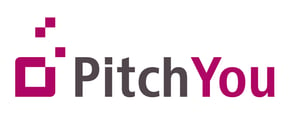
VERWANDTE ARTIKEL
November 5, 2020
Candidate journey — die 8 phasen nach paltron.
Lernen Sie die Phasen und Erfahrungen kennen, die Kandidat:innen während ihrer Arbeitssuche durchlaufen. Optimieren Sie diese, um die Top-Talente Ihrer Branche für sich zu gewinnen.

„Die richtigen Talente zu finden, ist der entscheidende Schlüssel zum Wachstum. Bewerbende einstellen war - und ist - das Wichtigste, was wir tun.“ — M. Benioff, Gründer von Salesforce (49.000 Mitarbeitende)
Durch den Fachkräftemangel haben Unternehmen zunehmend Schwierigkeiten, geeignete Mitarbeiter:innen zu finden. Die IT ist mit 124.000 offenen Stellen in Deutschland so stark betroffen, dass weniger als zehn Bewerbungen auf eine Position eingehen. Dieser Fachkräftemangel löst einen “War for Talents” aus, den Sie nur gewinnen können, wenn Sie einen überzeugenden Bewerbungsprozess bieten.
Um im Bewerbungsprozess zu überzeugen, müssen Sie Ihre Candidate Journey und Candidate Experience optimieren.
Was sind Candidate Journey und Candidate Experience?
Die Candidate Journey beschreibt die Reise Ihrer Kandidat:innen vom Beginn der Stellensuche bis zur Anstellung bei Ihnen (und darüber hinaus). In den verschiedenen Phasen dieser Reise (Customer Journey Phasen) machen Ihre Kandidat:innen verschiedene Erfahrungen. Diese Erfahrungen nennen wir Candidate Experiences. Was Ihnen kundenseitig als Customer Journey bekannt ist, wird personalseitig zur Candidate Journey. Diese Phasen der Candidate Journey zu identifizieren, bietet uns die Möglichkeit, unsere Kandidat:innen auf demselben Level wie Kund:innen zu behandeln. Denn wenn Sie den “War for Talents” gewinnen wollen, müssen Sie einem neuen Grundsatz folgen: Die Bewerberin ist Königin, der Bewerber König.
Während der gesamten Customer Journey haben die Kandidat:innen vielfältige Interaktionen mit Ihrem Unternehmen. Diese Interaktionen finden sowohl online als auch offline statt.
Ihre Kandidat:innen können zum Beispiel:
- Ihre Stellenanzeige auf einem Jobportal sehen.
- Die Jobs-Seite Ihrer Website besuchen.
- Ein Zeitungsinserat von Ihnen lesen.
- Die Social Media-Profile Ihres Unternehmens besuchen.
- Ihren Newsletter abonnieren.
- In Ihr Geschäft kommen.
- Ihrem Talent-Netzwerk beitreten.
- Ihre Bewertungen auf Kununu oder Glassdoor lesen.
- Mit Ihren Mitarbeiter:innen sprechen.
- Sich mit Ihnen zum Bewerbungsgespräch treffen.
Diese Interaktionspunkte werden Touchpoints genannt. Bei jedem Touchpoint werden Erfahrungen — Candidate Experiences — gemacht. Wenn die Erfahrungen positiv sind, bleiben die Kandidat:innen im Rennen. Wenn nicht, verlieren Sie sie an die Wettbewerber.
Warum sind Candidate Journey und Candidate Experience wichtig?
Als Arbeitgeber:in müssen Sie von der ersten Sekunde an attraktiv sein. Deshalb muss Ihr Unternehmen in allen Kanälen im besten Licht dastehen, sei es auf Social Media, am Telefon oder auf einem Jobportal. Natürlich sind auch alle folgenden Eindrücke wichtig. Positive Erfahrungen auf der Candidate Journey sprechen sich herum und beeinflussen Ihr Employer Branding — Ihre Reputation als Arbeitgeber:in. Dazu bildet das im Bewerbungsprozess erlangte Vertrauen das Fundament für die neue Beziehung zwischen Mitarbeiter:in und Unternehmen.
Nach einer negativen Candidate Journey ziehen 89 Prozent der neu eingestellten Mitarbeiter:innen einen erneuten Jobwechsel in Erwägung. Mehr als die Hälfte aller IT-Fachkräfte hat bereits eine Bewerbung zurückgezogen, wenn der Bewerbungsprozess zu lange gedauert hat. Dass Ihre Mitarbeiter:innen ein Teil dieser Statistik werden, können Sie mit einer positiven Candidate Journey und Experience vermeiden.
Was macht eine positive Candidate Journey aus?
Top-Fachkräfte gehen nicht nur durch Ihre Candidate Journey, sondern auch die Ihrer Konkurrenzunternehmen. Damit Sie im Rennen bleiben, muss Ihre Candidate Journey die folgenden drei Grundeigenschaften aufweisen:
Wertschätzung
Vom ersten Touchpoint an und durch den gesamten Prozess müssen Sie einen wertschätzenden Umgang pflegen. Behandeln Sie Ihre Kandidat:innen nicht, als wären sie austauschbar. Viele Unternehmen folgen einer “Sie kommen ja zu uns…”-Mentalität und schrecken so unbewusst die besten Bewerber:innen ab. Am Ende können diese Unternehmen zwar ihre offene Position füllen, jedoch nicht mit der bestmöglichen Fachkraft.
Die wenigen Unternehmen, die sich Gedanken zur Candidate Journey und der Candidate Experience machen, stauben die wahren Talente ab.
Hier ist, was Bewerber:innen erwarten:
- Nur eine Ansprechperson: Bewerber:innen wollen nicht auf eine unpersönliche Weise von verschiedenen Personen kontaktiert werden. Wenn nur eine Person zuständig ist, gibt das ein Gefühl von Vertrautheit und Persönlichkeit.
- Kontakt aufrecht halten: Bleiben Sie während der gesamten Candidate Journey mit Ihren Bewerbenden in Kontakt. Bestätigen Sie den Erhalt der Bewerbung und bedanken Sie sich dafür, bringen Sie alle Bewerbenden regelmäßig auf den neuesten Stand und informieren Sie auch über eine Absage.
- Konstruktives Feedback: Egal ob Sie eine Ab- oder Zusage erteilen, fügen Sie ein kurzes Feedback hinzu. Was hat Ihnen gefallen? Was können die Kandidat:innen beim nächsten Mal besser machen?
- Transparenz: Bewerber:innen möchten wissen, wie das Auswahlverfahren funktioniert und worauf geachtet wird. Teilen Sie Ihren Prozess und Ihre Kriterien möglichst genau und einfach zugänglich mit.
- Menschlichkeit: Niemand wird gerne wie ein Verbrauchsgut behandelt. Zeigen Sie von Anfang an, dass Ihrem Unternehmen die Mitarbeiter:innen wichtig sind.
Schnelligkeit
Die Zeit Ihrer Bewerber:innen ist wertvoll und sollte auch so behandelt werden. Wenn unnötige Formulare ausgefüllt werden müssen oder zeitraubende Hürden im Weg liegen, führt das zu Frustration und oft sogar zum Abbruch der Bewerbung.
Beispielsweise darf es nicht länger als 60 Minuten dauern, um eine Bewerbung auszufüllen. Deshalb sollte man sich gut überlegen, ob man die Bewerber:innen den Lebenslauf selbst ins eigene HR-Tool abtippen lassen möchte. Wenn die Unterlagen Sie dann erreichen, sollten Sie diese sich nicht auf Ihrem Pult stapeln lassen, denn zwei Drittel aller Bewerber:innen fühlen sich durch eine schnelle Bearbeitung ihrer Unterlagen motiviert, im Bewerbungsprozess fortzufahren.
Studien zeigen: Die gesamte Candidate Journey darf im Durchschnitt nicht länger als sechs Wochen dauern, damit sie als gut empfunden wird.
Simplizität
Wussten Sie, dass sich fast 20 Prozent aller unter 30-Jährigen lieber nicht bei Ihnen bewerben, statt ein umständliches e-Recruiting-Formular ausfüllen zu müssen? Oft sind das genau die Kandidat:innen, die aufgrund ihres starken Profils genügend andere Möglichkeiten haben.
Wir haben einige Tipps, um die Candidate Journey so einfach wie möglich zu gestalten:
- Social Media: Es gibt verschiedene Social Media Plattformen für geschäftliche Zwecke. Xing und LinkedIn sind mit Abstand die Beliebtesten. Geben Sie potenziellen Kandidat:innen die Möglichkeit, sich direkt über Xing und LinkedIn zu bewerben.
- One-Click-Bewerbung: Sich über Social Media zu bewerben ist schon sehr praktisch. Mit der One-Click-Bewerbung geht es aber noch praktischer — nämlich eben auf einen Klick. Bei der One-Click-Bewerbung können potenzielle Kandidat:innen einen Knopf auf Ihrer Website drücken und Ihre Software importiert automatisch deren Xing- und LinkedIn-Profil. So müssen die Kandidat:innen erst nach der ersten Auswahlrunde ein Bewerbungsschreiben verfassen.
- Einfache Titel: Auch wenn die Anforderungen ideal auf jemanden zugeschnitten sind, würde sich diese Person bei einem unverständlichen Jobtitel gar nicht erst bewerben. Halten Sie den Jobtitel also einfach und verständlich.
- Klare Jobanforderungen: Wer nicht weiß, was gefordert wird, bewirbt sich nicht. Vermeiden Sie “coole” Formulierungen und nichtssagende Buzzwords.
- Online spielt die Musik: Die eigene Website und weit bekannte Jobportale sind heutzutage die wichtigsten Kanäle der Personalbeschaffung. Stellen Sie also sicher, dass Ihre Onlinepräsenz ansprechend und aktuell ist.
Die 8 Phasen der Candidate Journey nach PALTRON
Die meisten Hilfsartikel sprechen von sechs Phasen in einer Candidate Journey. Wir haben festgestellt, dass so wichtige Möglichkeiten zur Optimierung verloren gehen. Deshalb stellen wir Ihnen nun die 8 Phasen der Candidate Journey nach PALTRON vor.

Bewusstsein
In der ersten Phase erfahren Ihre Kandidat:innen von der offenen Stelle . Dies kann auf komplett unterschiedliche Arten passieren. Zum Beispiel durch einen Eintrag in einer Stellenbörse wie LinkedIn oder Indeed, über Ihre Social Media Kanäle, durch das Lesen eines Artikels über Ihr Unternehmen und den anschließenden Besuch Ihrer Karriereseite oder durch eine Empfehlung. Es gibt praktisch unendlich viele weitere Touchpoints, die Sie für eine erste positive Candidate Experience (die Erfahrung Ihrer Kandidat:innen auf der Candidate Journey) nutzen können.
Dieser Phase wird oft zu wenig Beachtung geschenkt. Im Abschnitt Was macht eine positive Candidate Journey aus? haben Sie gelernt, dass Simplizität gerade in der Stellenausschreibung enorm wichtig ist. In der Phase der Erwägung lesen sich die Kandidat:innen durch Ihre Stellenbeschreibung und erwarten klare, attraktive Konditionen und Herausforderungen.
Wir gratulieren! Der Touchpoint “Stellenausschreibung” hat die Erwartungen erfüllt und Interesse geweckt.
Die Kandidat:innen gehen nun über Ihre Stellenanzeige hinaus und möchten mehr über Ihr Unternehmen erfahren . Was ist Ihre Mission? Können sie sich mit Ihren Werten identifizieren? Was sagen frühere Mitarbeiter:innen über Sie? Um in diesem Abschnitt der Candidate Journey positive Erfahrungen zu ermöglichen, müssen Sie die Prinzipien des Employer Branding kennen und anwenden. Beispielsweise sind die besten Arbeitgeber:innen über alle Kanäle konsistent. Social Media, Website, Mund-zu-Mund-Erzählungen, Stellenbeschreibung und Medienauftritte schaffen ein einheitliches, positives Bild Ihres Unternehmens. Das führt zu stolzen Angestellten und motivierten Bewerbenden.
Mehr als die Hälfte der Bewerber:innen durchkämmen vor ihrer Bewerbung die Social Media- Profile des potenziellen Arbeitgebers oder der potentiellen Arbeitgeberin auf der Suche nach ehrlichen Meinungen. Da lohnt es sich als Unternehmen sehr, in eine starke Employer Brand zu investieren.
Wie oben erwähnt, empfehlen wir Ihnen, diese Phase persönlich zu halten und schnell zu bearbeiten. Versetzen Sie sich in die Lage Ihrer Bewerbenden und testen Sie den Bewerbungsprozess selbst. Möglicherweise werden Ihnen Details oder sogar ganze Abläufe auffallen, die für eine schlechte Candidate Experience sorgen könnten. Bessern Sie diese aus.
Können sich die Bewerbenden beispielsweise mit dem Handy bewerben? Laut einer Studie von Glassdoor benutzen 58 Prozent der Kandidat:innen das Handy, um nach einer neuen Stelle zu suchen. Oft würden sie sich gerne direkt bewerben. Wenn Sie diese Möglichkeit bieten, teilen Sie es den Kandidat:innen in der Stellenbeschreibung mit.
Und am wichtigsten: Verarbeiten Sie eingegangene Bewerbungen möglichst sofort und kommunizieren Sie häufig mit den Bewerbenden. So laufen Sie nicht Gefahr, die Top-Talente in der Zwischenzeit an Ihre Konkurrenz zu verlieren.
Diese Phase bezieht sich nicht auf Ihre Auswahl zwischen den Bewerbenden, sondern auf deren Auswahl zwischen potenziellen Arbeitgeber:innen. Die Wahrscheinlichkeit ist hoch, dass Sie nicht das einzige Unternehmen im Rennen sind.
Transparenz ist in dieser Phase der Schlüssel. Während dem ersten Bewerbungsgespräch können die meisten Kandidat:innen bereits sagen, ob sie sich eine Anstellung bei Ihrem Unternehmen vorstellen könnten. Vermitteln Sie also beim Vorstellungsgespräch möglichst klar, wie es ist, für Ihr Unternehmen zu arbeiten. Dazu gehört, welche Arbeitskultur herrscht, wie der Teamgeist ist, welche Herausforderungen die Position umfasst und die möglichen Wachstumschancen und Weiterbildungen für die Kandidat:innen. Ermutigen Sie Ihr Gegenüber, in dieser Phase auch so viele Fragen zu stellen und Bedenken zu äußern wie möglich. Ungelöste Probleme geistern in den Köpfen herum und wirken sich negativ auf die Entscheidung aus.
Gute Neuigkeiten, gerade eben hat das ideale Talent zugesagt! Zeigen Sie, dass Sie sich auf die Zusammenarbeit freuen und am gemeinsamen Erfolg interessiert sind. Die Candidate Journey endet nämlich nicht mit der Jobzusage. Ihr neues Teammitglied erwartet weitere Betreuung und ein gutes Onboarding.
Etwa ein Viertel der neu eingestellten Mitarbeiter:innen verlässt das Unternehmen innerhalb von 90 Tagen wieder. Onboarding ist ein zeit- und kostenintensiver Prozess, der sich ganz einfach optimieren lässt:
- Vereinbaren Sie Einzelgespräche . Gemäß einer Umfrage von LinkedIn finden 72 Prozent der Arbeitnehmenden, dass persönliche Gespräche zu zweit der wichtigste Aspekt der Onboarding-Erfahrung ist.
- Setzen Sie gemeinsam frühzeitig Erwartungen und Ziele . Ungewissheit über Arbeitserwartungen und Leistungsziele ist der schlimmste Feind eines neuen Teammitglieds. Laut derselben LinkedIn-Umfrage war das Verständnis von Leistungszielen der zweitwichtigste Aspekt der Einarbeitung.
- Senden Sie Ihrem neuen Teammitglied schon vor dem ersten Tag relevante Dokumente zu . Am ersten Tag legen Sie ihm ein Begrüßungspaket und eine Karte beim Arbeitsplatz bereit, um weiterhin Wertschätzung zu zeigen. Ein Anruf vom Management zur Begrüßung wird ebenfalls geschätzt.
- Bringen Sie Ihr neues Teammitglied mit erfahrenen Angestellten zusammen, die ihm oder ihr alle Grundlagen während dem Arbeiten beibringen können. So lernt er oder sie von den richtigen Personen und kann gleichzeitig Beziehungen im Team aufbauen.
Optimierung
Das Feedback Ihres neuen Teammitglieds ist die wichtigste Quelle zur Verbesserung Ihrer Candidate Journey und den dazugehörigen Candidate Experiences. Nehmen Sie sich Zeit, Ihre neuen Mitarbeiter:innen zu befragen, hören Sie gut zu und setzen Sie das erhaltene Feedback so schnell wie möglich um. Nach dieser Phase ist die Candidate Journey zu Ende. Ab jetzt beginnt die Employee Journey .
Eine Strategie zur Gewinnung von Mitarbeiter:innen reicht nämlich nicht. Sie brauchen zudem auch eine Bindungsstrategie .
Fünf konkrete Maßnahmen zur Verbesserung Ihrer Candidate Journey
Im ganzen Artikel finden Sie verschiedenste Tipps, Tricks und Techniken, um die Candidate Journey Ihres Unternehmens zu verbessern. Hier führen wir nochmals die wichtigsten und einfachsten Verbesserungen, inklusive zusätzlichen Tipps, auf.
Die richtige Stellenbeschreibung
Achten Sie auf einen verständlichen Jobtitel sowie realistische Anforderungen und attraktive Bedingungen. Als Beispiel sehen Sie hier eines unserer Inserate auf unserer Website.

Nutzen Sie eine Bewerbermanagement-Software
Mit der richtigen Bewerbermanagement-Software können Sie ansprechende Stellenanzeigen kreieren, diese auf hunderten Kanälen gleichzeitig posten und alle eingegangenen Bewerbungen automatisch sortieren. Das macht Ihren Prozess einfacher, schneller und wirksamer. Finden Sie das Programm, das zu Ihnen passt hier .
Proaktive und persönliche Kommunikation
Wir bei PALTRON haben für jede Stellenausschreibung eine Ansprechperson hinzugefügt. Diese kümmert sich um jede Bewerbung persönlich und bleibt mit den Bewerbenden in Kontakt. So schaffen wir Transparenz und zeigen unsere Wertschätzung. Geben auch Sie Ihren Kandidat:innen eine Möglichkeit, persönlich Kontakt aufzunehmen.
Einführung von Bewerbertagen
Wenn Sie viele Bewerbungen erhalten, lohnt es sich einen Bewerbertag zu vereinbaren. Dort können die Bewerbenden Ihr Unternehmen kennenlernen und sich ein Bild von der erwartenden Arbeit machen. So reduzieren Sie die Zahl der Bewerbungen, die nirgendwo hinführen und können persönlich die vielversprechendsten Kandidat:innen von einem Bewerbungsversuch überzeugen.
Beschleunigung der administrativen Prozesse
Halten Sie Administratives so kurz und knapp wie möglich. Geschwindigkeit ist essenziell und Sie wollen bestimmt nicht Ihre Kandidat:innen an die Konkurrenz verlieren, nur weil diese einen Vertrag schneller ausstellen konnte.
Um den “War for Talents” zu gewinnen, müssen Unternehmen ihre Denkweise drastisch ändern. Sie müssen Ihre Prozesse aus der Sicht der Kandidat:innen und nicht mehr aus der eigenen Sicht angehen. Viele setzen schon alles daran, die Customer Journey ihrer Kund:innen stetig zu optimieren. Nun ist es auch personalseitig an der Zeit, neue Wege einzuschlagen.
Sie wissen jetzt, worauf Sie achten müssen. Analysieren Sie die Candidate Journey Ihres Unternehmens aus der Sicht Ihrer Bewerbenden und schauen Sie genau hin. Identifizieren Sie alle Touchpoints und erarbeiten Sie Möglichkeiten, die dazugehörigen Candidate Experiences zu verbessern. Sie werden eine kleinere Absprungrate feststellen, großartige Fachkräfte gewinnen und mit allen neuen Mitarbeitenden ein solides Fundament für die Zusammenarbeit legen.
Wenn Sie an irgendeinem Punkt Hilfe benötigen, sind wir gerne für Sie da . Viel Spaß!
Weiterführende Artikel:
Entmystifizierung des Megatrends: New Work
Sichern Sie die Zukunft Ihres Unternehmens mit Employee Experience Programmen
KI im Recruiting: Was die Zukunft bringen könnte und was sie besser nicht bringen sollte
.jpg)
Bleiben Sie relevant: Die Soft Skills-Checkliste, die jede IT-Fachkraft braucht!
.jpg)
Wirtschaftlichkeit von Corporate Social Responsibility (CSR)
.png)
Pressemitteilung: Beste Personalberater 2022: PALTRON zum vierten Mal von WirtschaftsWoche ausgezeichnet
It governance, it grundlagen, zukunftstechnologien, abonnieren sie unseren newsletter.
Checkliste: Wie gut ist Ihre Candidate Journey?
Testen Sie anhand von 7 Kriterien, wie gut Ihre Candidate Journey heute ist.
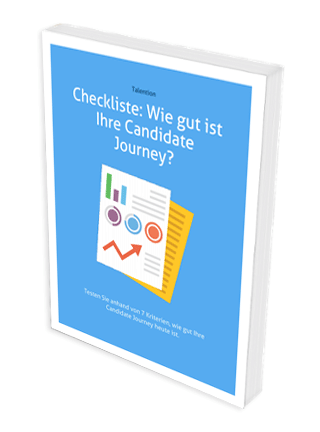
Machen Sie mit dieser kostenlosen Checkliste den Selbsttest und finden Sie anhand von 7 Kriterien heraus, wo bei Ihnen noch Optimierungspotenzial für Ihre Candidate Journey steckt.
Machen Sie jetzt den Test und laden sich die kostenlose Checkliste zur “Candidate Journey” herunter!
Themen in der Checkliste:
- 7 Kriterien für eine gute Candidate Journey
- Hilfreiche Tipps und Beispiele
Jetzt kostenlose Checkliste downloaden
Impressum Datenschutzerklärung
Vorteile einer optimierten Candidate Journey und Experience
- First Online: 06 June 2023
Cite this chapter

- Hans-Heinz Wisotzky 2
3897 Accesses
Zusammenfassung
Das Ziel einer optimierten Candidate Journey muss sein, dass die Anzahl der für die Besetzung einer offenen Position in Frage kommenden Kandidaten signifikant gesteigert wird. Durch den Wechsel von einem reaktiven, auf Stellenanzeigen basierten Recruiting-Ansatz hin zu einem aktiven Ansprechen von Talenten werden automatisch mehr potenzielle Kandidaten auf das suchende Unternehmen aufmerksam. Sei es durch direkte Ansprache über Nachrichten der Recruiter oder Hiring-Manager in Social-Media-Business-Netzwerken wie zum Beispiel LinkedIn und XING oder sei es durch das kontinuierliche Schalten von Social-Media-Recruiting-Kampagnen in Kanälen wie Facebook, Instagram oder Special Interest Netzwerken.
This is a preview of subscription content, log in via an institution to check access.
Access this chapter
- Available as PDF
- Read on any device
- Instant download
- Own it forever
- Available as EPUB and PDF
- Compact, lightweight edition
- Dispatched in 3 to 5 business days
- Free shipping worldwide - see info
Tax calculation will be finalised at checkout
Purchases are for personal use only
Institutional subscriptions
Vgl. auch: Cost of Vacancy Formulas for Recruiting and Retention Managers – Dr. John Sullivan, July 2005.
Weiterführende Literatur
Bruno, B. (2020). High-tech high-touch recruiting . KoganPage. (Englisch).
Google Scholar
Buchheim, C., & Weiner, M. (2014). HR-Basics für Start-ups . Springer Gabler.
Book Google Scholar
Dannhäuser, R. (2020). Praxishandbuch Social Media Recruiting (4. Aufl.). SpringerGabler.
Fliegen, I. (2020). Crashkurs Recruiting . Haufe.
Knabenreich, H., & Ederer, P. (2019). Karriere-Webseites mit Wow!-Effekt . Springer Gabler.
Konschak, B. (2014). Professionelles Personalmarketing . Haufe.
Lorber, C., & Kummer, H. (2020). Playbook Recruiting . Haufe.
Olberding, J. (2021). Agiles Recruiting . Haufe.
Ullah, Robindro und Maïté (2015). Erfolgsfaktor Candidate Experience – Der Perspektivwechsel im Recruiting, Schäffer-Poeschel
Verhoeven, T. (2015). Candidate Experience – Ansätze für eine positiv erlebte Arbeitgebermarke im Bewerbungsprozess und darüber hinaus . Springer Gabler.
Download references
Author information
Authors and affiliations.
Arnsberg, Deutschland
Hans-Heinz Wisotzky
You can also search for this author in PubMed Google Scholar
Rights and permissions
Reprints and permissions
Copyright information
© 2023 Der/die Autor(en), exklusiv lizenziert an Springer-Verlag GmbH, DE, ein Teil von Springer Nature
About this chapter
Wisotzky, HH. (2023). Vorteile einer optimierten Candidate Journey und Experience. In: Die perfekte Candidate Journey & Experience . Springer Gabler, Berlin, Heidelberg. https://doi.org/10.1007/978-3-662-66875-7_8
Download citation
DOI : https://doi.org/10.1007/978-3-662-66875-7_8
Published : 06 June 2023
Publisher Name : Springer Gabler, Berlin, Heidelberg
Print ISBN : 978-3-662-66874-0
Online ISBN : 978-3-662-66875-7
eBook Packages : Business and Economics (German Language)
Share this chapter
Anyone you share the following link with will be able to read this content:
Sorry, a shareable link is not currently available for this article.
Provided by the Springer Nature SharedIt content-sharing initiative
- Publish with us
Policies and ethics
- Find a journal
- Track your research

IMAGES
VIDEO
COMMENTS
Cadidate Journey Mapping (ein Beispiel) Wenn du die Candidate Journey bei euch im Unternehmen skizzieren möchtest, nutze unsere Vorlage. Hier kannst du das PDF downloaden. Das "Bewerbererleben" bzw. die Candidate Experience an jedem einzelnen Touchpoint (wir nennen diese auch "Momente der Wahrheit") ist von hoher Bedeutung, ob sich der ...
Candidate Journey Touchpoint #2: Ihre Reputation als Unternehmen in der Candidate Journey. ... So können Ihnen die allgemeinen Daten, zum Beispiel wie viele Bewerber*innen wieder abspringen, schon etwas darüber sagen wie gut die Erfahrung war. Sie können Bewerber*innen, eingestellte und ablehnte, an einer Umfrage teilnehmen lassen und ihnen ...
Stage 8: Offer. This is where the candidate journey finally comes to an end, now handing over the baton to the term "employee.". This stage is marked with the extension of a job offer. It may also include a negotiation process where the candidate and company discuss salary, benefits, and other terms of employment.
Step #1: Define your candidate persona. The first thing you need to do is to determine whose candidate journey you are mapping. In other words, you need to create your candidate persona. ️ Download our Guide for creating a candidate persona ! Candidate persona is the semi-fictional representation of your ideal job candidate.
It consists of a sequence of steps that job applicants go through, from the moment they're aware of a vacancy until their onboarding. The candidate journey can be represented in a funnel—similar to those used in sales and marketing—of the following seven steps: awareness, consideration, interest, application, selection, hire, and on ...
The pre-application phase consists of three steps: 1. Awareness. These are the first of the candidate journey touchpoints with your company. They make potential candidates aware of who you are, what your organization does and what it's like to work there. In this stage, candidates are just getting to know you.
Die Candidate Journey beschreibt die Reise, die ein potenzieller Bewerber durchläuft, von der ersten Kenntnisnahme einer Stellenanzeige bis hin zur Einstellung oder Absage. Dieser Prozess umfasst verschiedene Phasen, in denen der Bewerber mit dem Unternehmen in Kontakt tritt, Informationen sammelt und Entscheidungen trifft. ...
Candidate Journey - die Definition. Als Candidate Journey bezeichnet man den Weg, den Kandidaten vom ersten Kontaktpunkt mit einem Unternehmen bis hin zum Abschluss des Bewerbungsverfahrens, zurück legen. Im Unterschied zur Candidate Experience - also den positiven und negativen Erfahrungen, die Kandidaten im Rahmen des Bewerbungsprozesses ...
The candidate journey itself consists of six critical stages, and each presents a unique opportunity for recruiters to make a lasting impression. With a tailored approach at each stage, recruiters can shape the candidate's behavior, attitude, and overall experience. With that being said, we break down the stages for you below, so you can take ...
Candidate Journey Definition. Similarly to when buyers look for services and products to purchase, candidates go through different stages when looking for new job opportunities. This is the reason why today's candidates need to be treated as customers. There are 6 stages through which all job seekers go through: Awareness. Consideration. Interest.
Candidate Journey: Die wichtigsten Phasen und Berührungspunkte. Die ‚Candidate Journey' beschreibt die Reise Ihres Wunschkandidaten vom Beginn der Stellensuche bis zur Anstellung. In diesem Zeitraum kann einiges schiefgehen, denn anders als in den 1990er-Jahren gestaltet sich der Weg einer Candidate Journey heute weder linear noch analog.
Zahlreiche Beispiele, Methoden und Tipps geben Anregungen für die Praxis und helfen bei der täglichen Recruiting-Arbeit. Der Inhalt. Ziele und Strategien im Recruiting; Grundlagen, Touchpoints und Inhalte der Candidate Journey; Direktansprache über Social Media, Unternehmenswebseite, Karrierewebseite sowie Kennenlerngespräche
Die Candidate Journey beschreibt den gesamten Prozess, den Bewerber:innen von der ersten Wahrnehmung eines Unternehmens bis zur Einstellung und darüber hinaus durchlaufen. Sie umfasst verschiedene Phasen, darunter Anziehung, Information, Bewerbung, Auswahl, Onboarding und Bindung. In der heutigen digitalen Welt, geprägt von zahlreichen ...
The 8 stages of the candidate journey, according to PALTRON. 5. Five practical tips to improve your candidate journey. 6. Conclusion. "Acquiring the right talent is the most important key to growth. Hiring was—and still is—the most important thing we do." —Marc Benioff, Founder, Chairman and co-CEO of Salesforce (49,000 employees) Due to ...
In diesem Kapitel erkläre ich die Begriffe Candidate Journey und Candidate Experience und beschreibe zusätzlich die Unterschiede dieser beiden Begriffe sowie deren Zusammenhang mit den Recruiting-Prozessen im Unternehmen. ... Oder es sind Beispiele für besonders gut umgesetzte Maßnahmen illustriert und idealerweise gibt es Online-Zugänge ...
Positive Erfahrungen auf der Candidate Journey sprechen sich herum und beeinflussen Ihr Employer Branding — Ihre Reputation als Arbeitgeber: ... Zum Beispiel durch einen Eintrag in einer Stellenbörse wie LinkedIn oder Indeed, über Ihre Social Media Kanäle, durch das Lesen eines Artikels über Ihr Unternehmen und den anschließenden Besuch ...
The candidate journey can be represented in a funnel—similar to those used in sales and marketing—of the following seven steps: awareness, consideration, interest, application, selection, hire, and on-boarding . What is perhaps the main issue with the candidate journey is that it tends to be unnecessarily long.
Tips to ensure a smooth candidate journey. 1. Put the candidate in the center of the process. The journey needs to be candidate-centric at every stage, otherwise, you risk alienating job seekers. To create a candidate-centric recruitment model, the focus needs to always be on the candidate's needs and overall experience.
by Anna Morelock. Candidate journey mapping helps you streamline your hiring process and create a great candidate experience. By walking through the application and hiring process from the candidate's point of view, you optimize your company's ability to attract top talent. The candidate journey begins before job seekers apply to your job ...
The 4 phases of the Candidate Journey. Let's make it clear right away that, from a Talent Acquisition perspective, a complete funnel in which the candidate makes contact with the company usually consists of 6 phases: Awarness, Consideration, Interest, Application, Selection and Hire. All six phases make up the complete Talent Acquisition ...
man seine Candidate Experience messen möchte, dann ist es wichtig, dass man nicht ver-sucht, die Candidate Experience nur an einem Kontaktpunkt und/oder nur einer Phase zu messen. Meiner Erfahrung nach ist hier ein gesunder Mix gefragt. Abb. 5.2 Candidate journey mapping Zeitpunkt Beispiele Vorteil Nachteil Vor der Bewerbung Auf Karrieremessen;
Onboarding sets the stage. "From the candidate's perspective, the onboarding experience is the same as the hiring experience," Mary said. "They don't care that you've handed it off to an onboarding coordinator. It needs to be seamlessly integrated.". "You want to make sure that when they show up," she continued, "they feel ...
Testen Sie anhand von 7 Kriterien, wie gut Ihre Candidate Journey heute ist. Machen Sie mit dieser kostenlosen Checkliste den Selbsttest und finden Sie anhand von 7 Kriterien heraus, wo bei Ihnen noch Optimierungspotenzial für Ihre Candidate Journey steckt.
Sobald die Candidate Journey optimiert ist und die Candidate Experience immer besser wird, entstehen positive Effekte, die vielen Unternehmen heute leider noch nicht vollumfänglich bewusst sind. Hierzu zählt zum Beispiel, dass Talente und Kandidaten ihren Freunden und Bekannten positiv von einer guten Candidate Experience berichten werden.